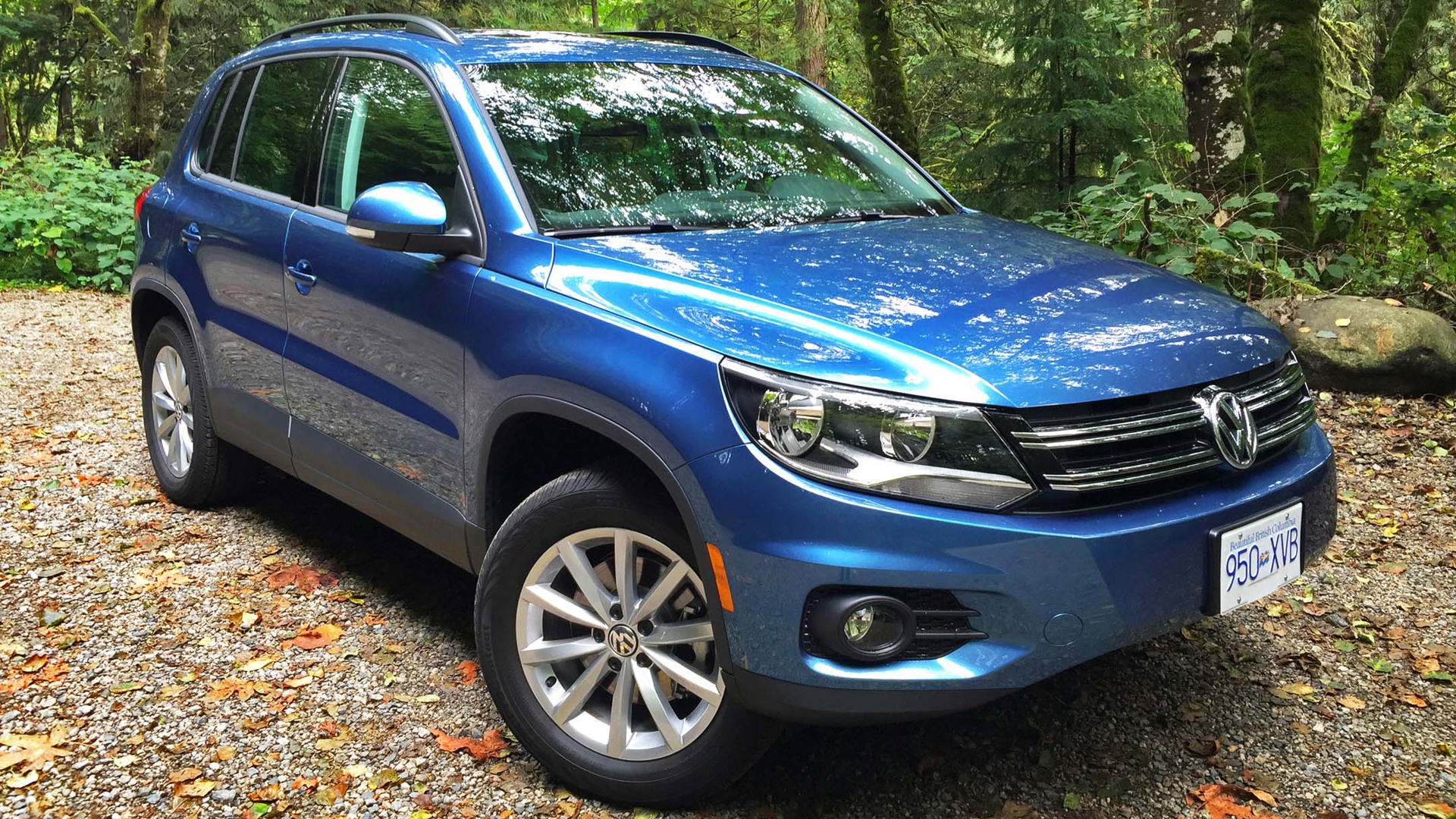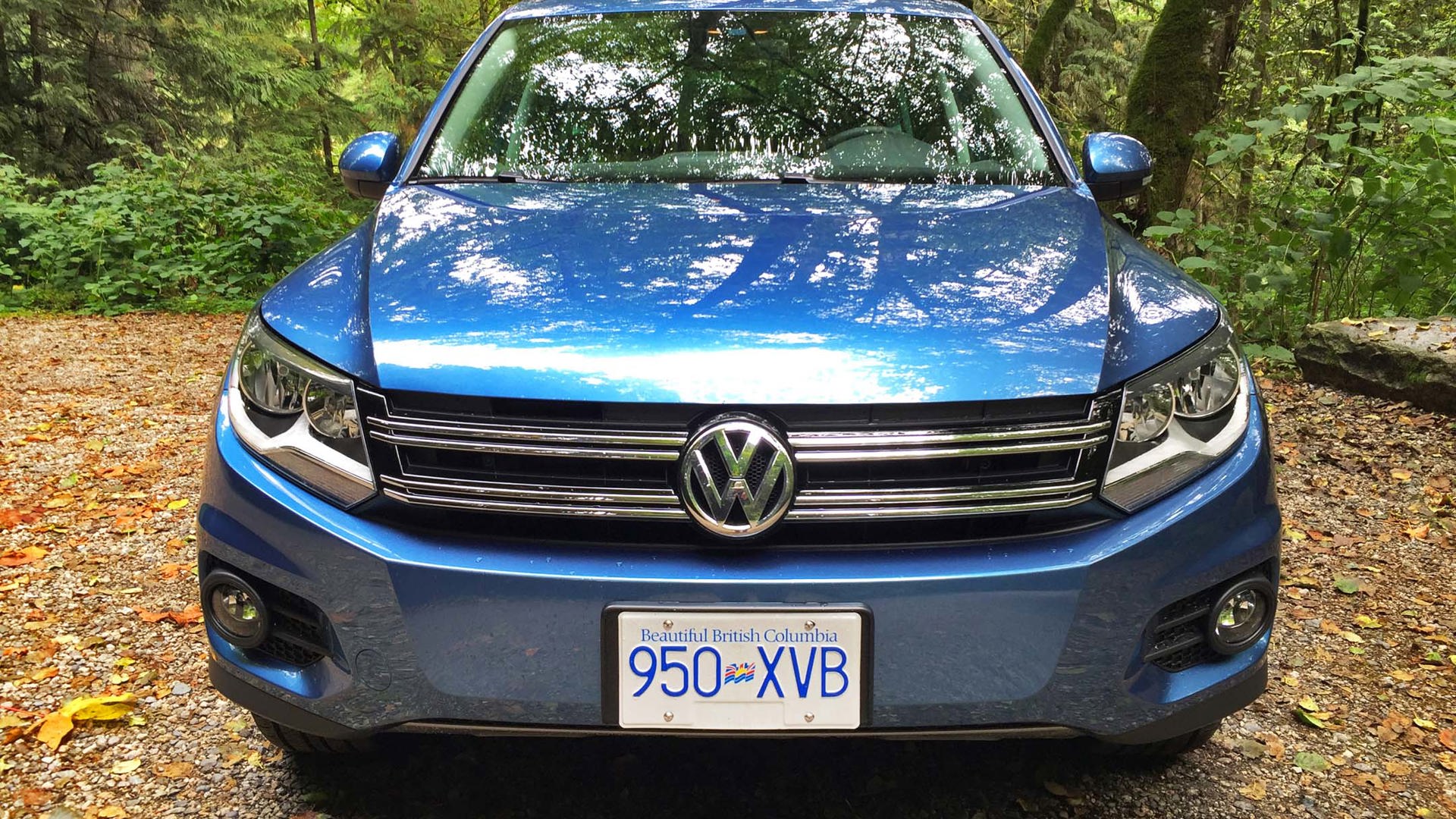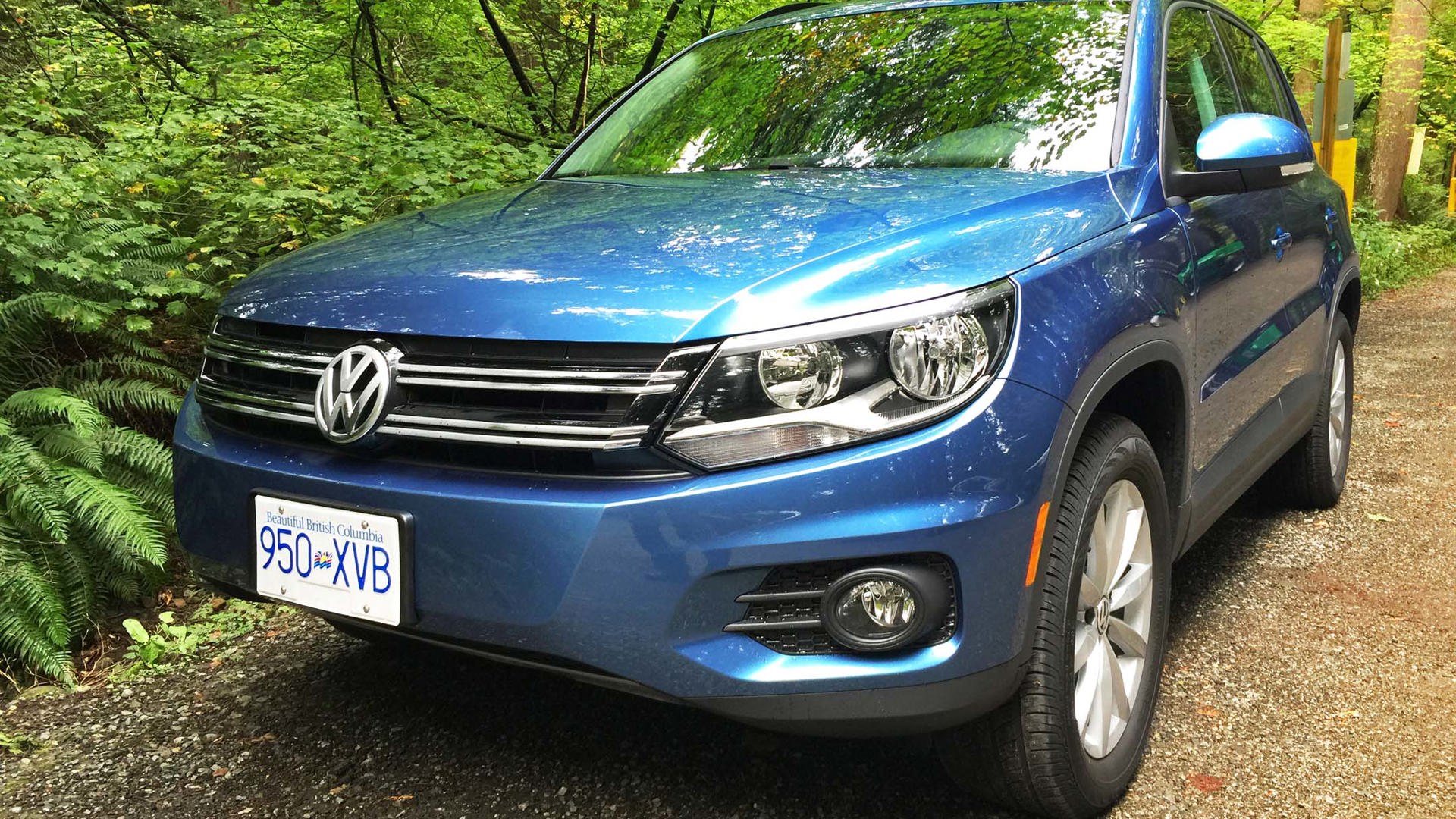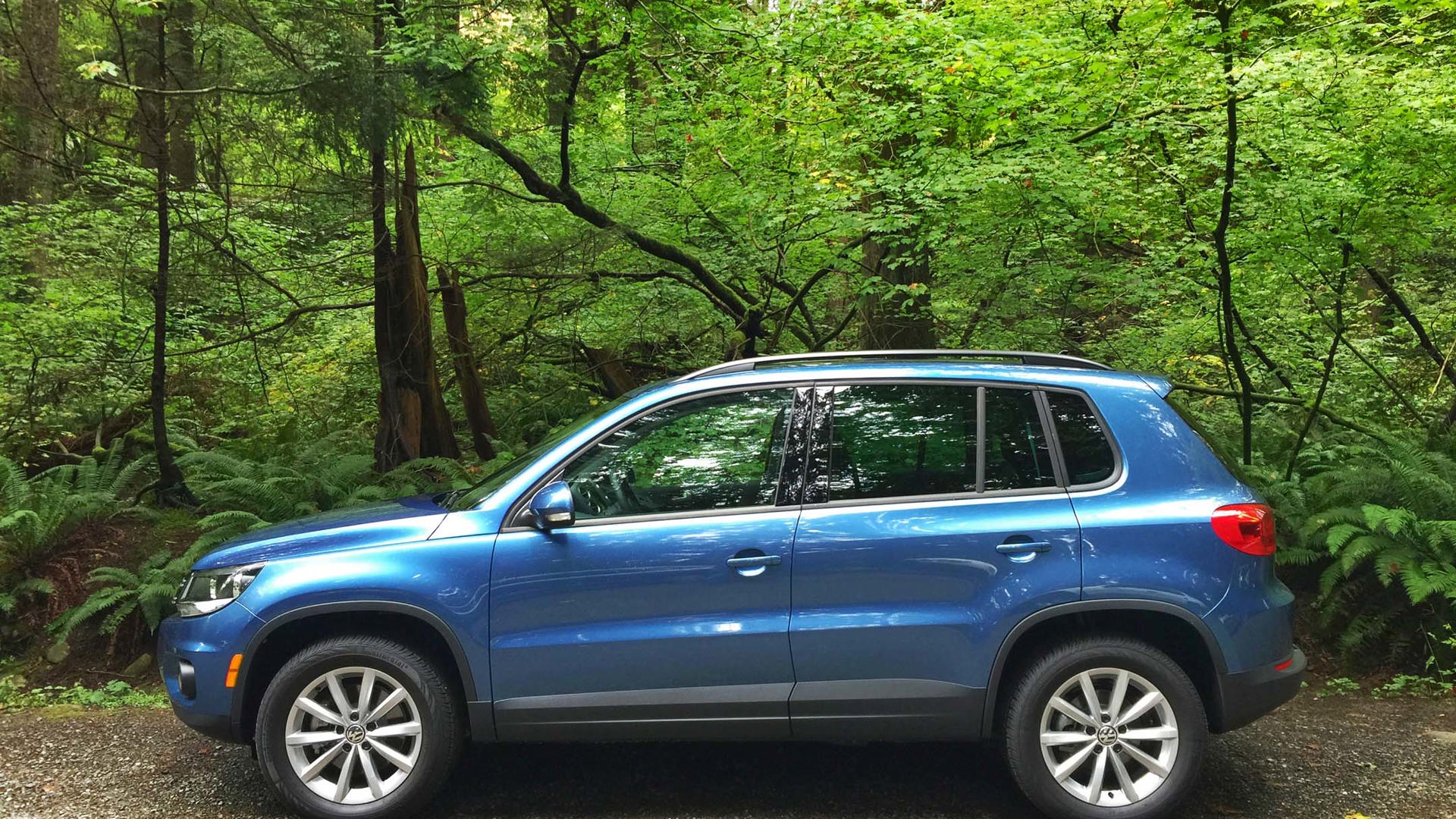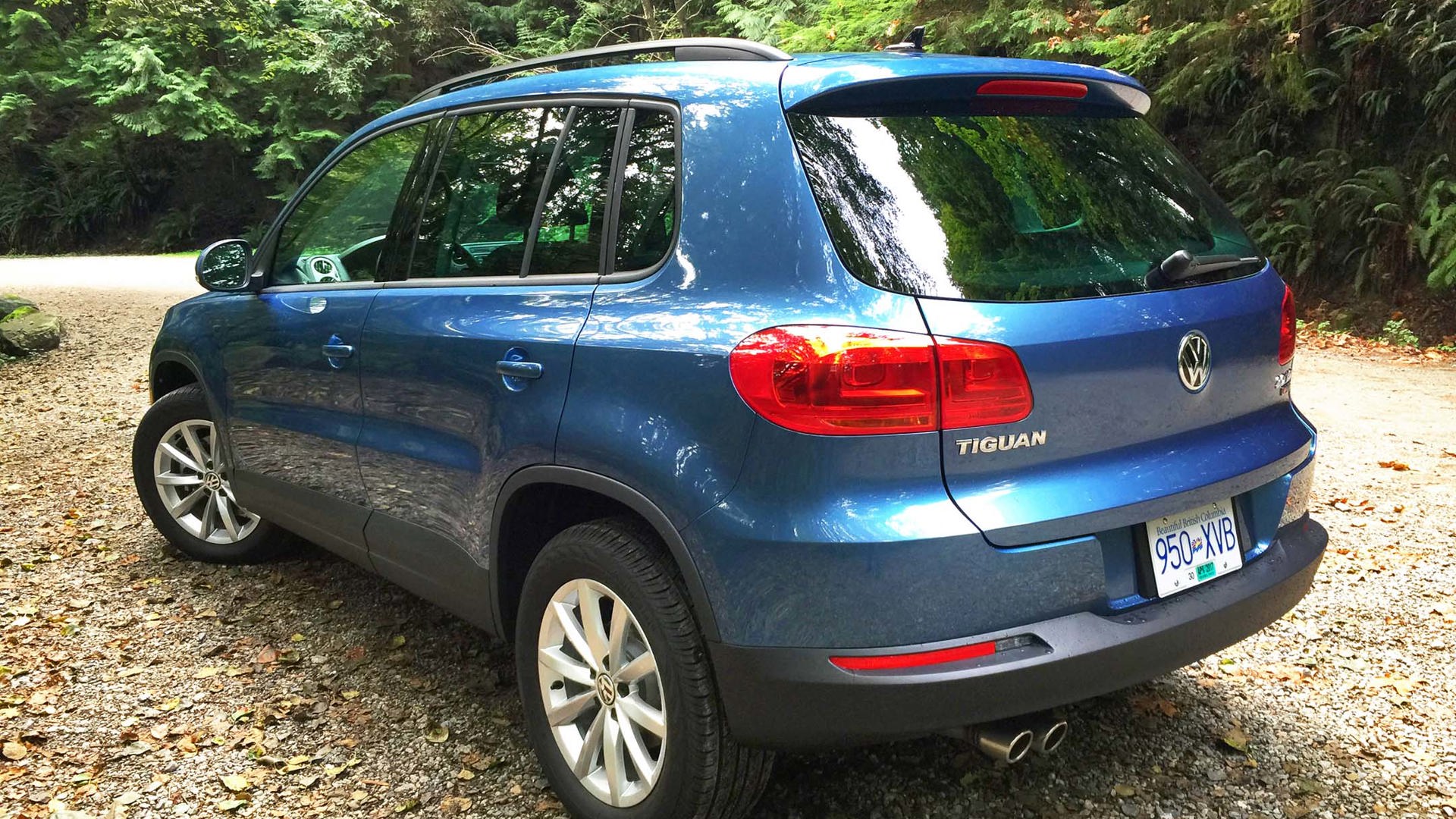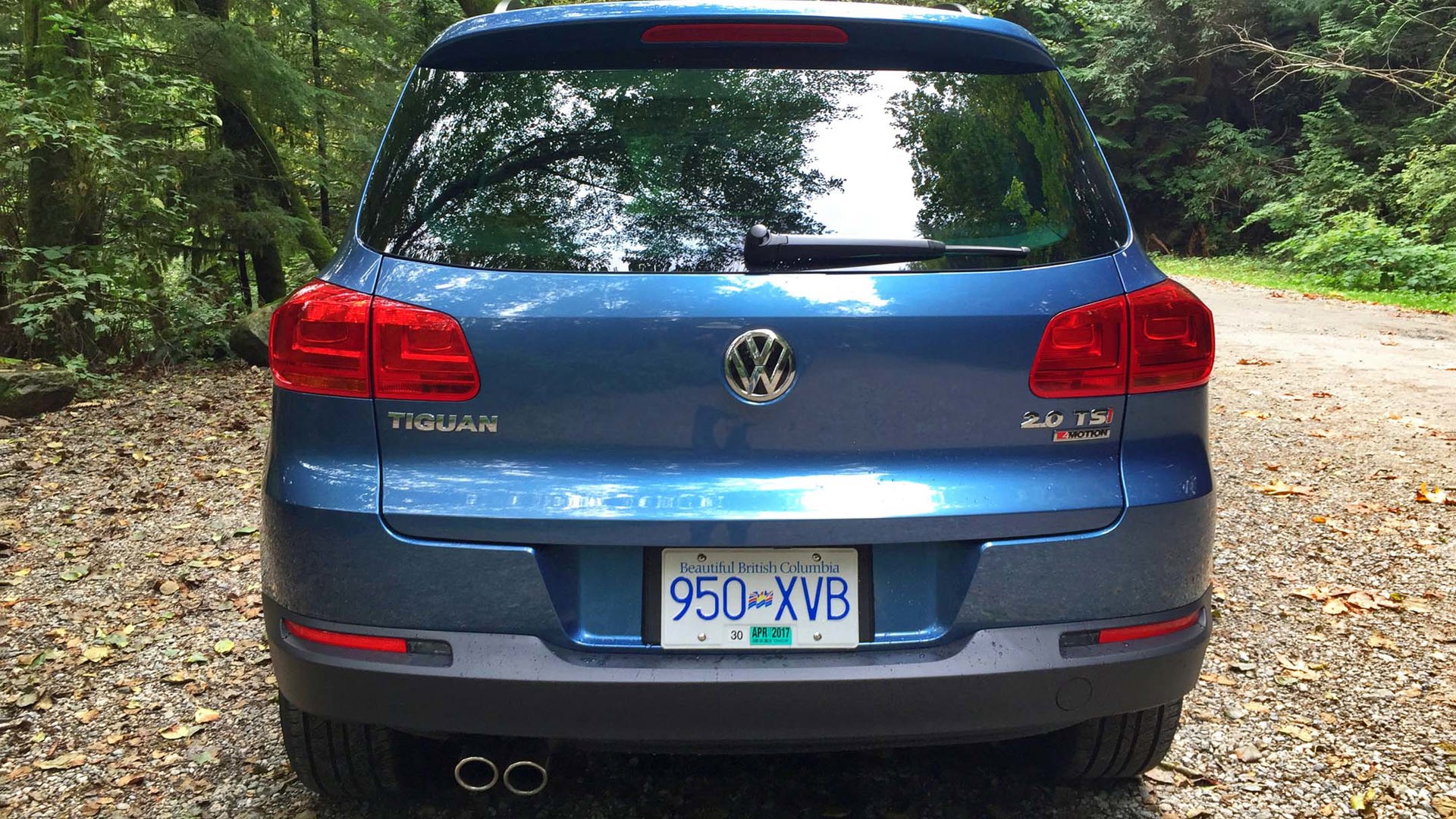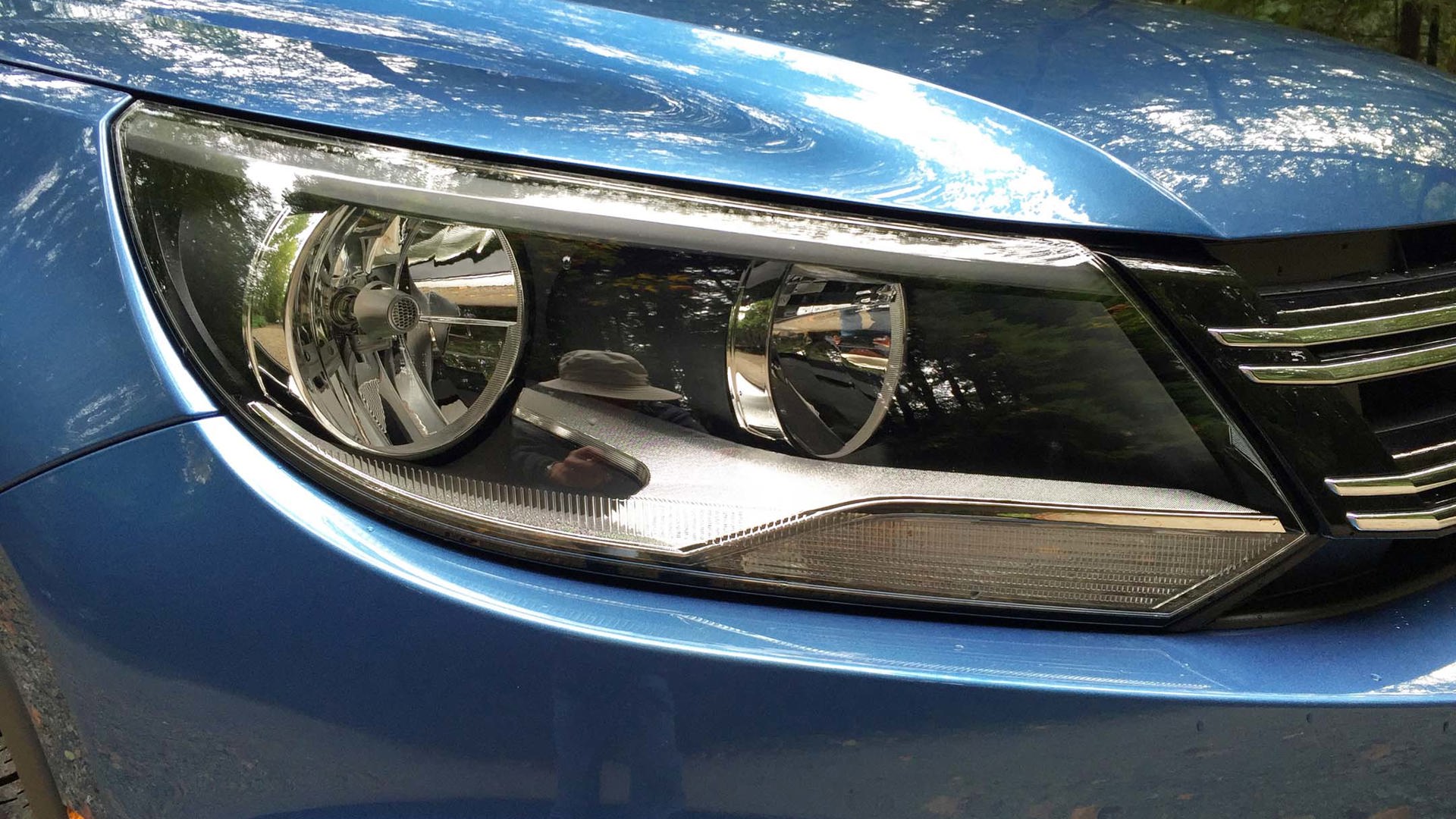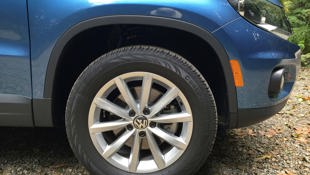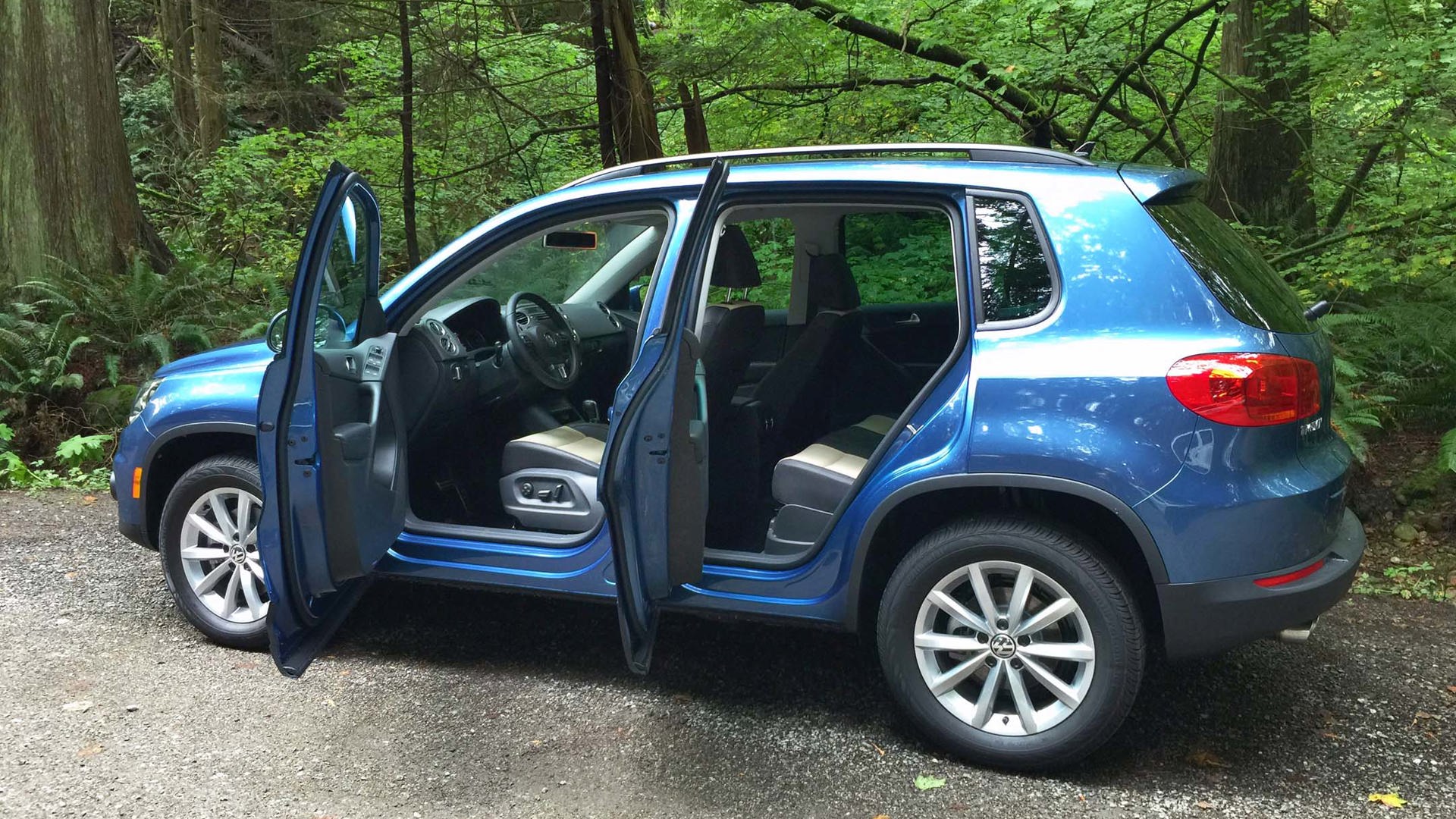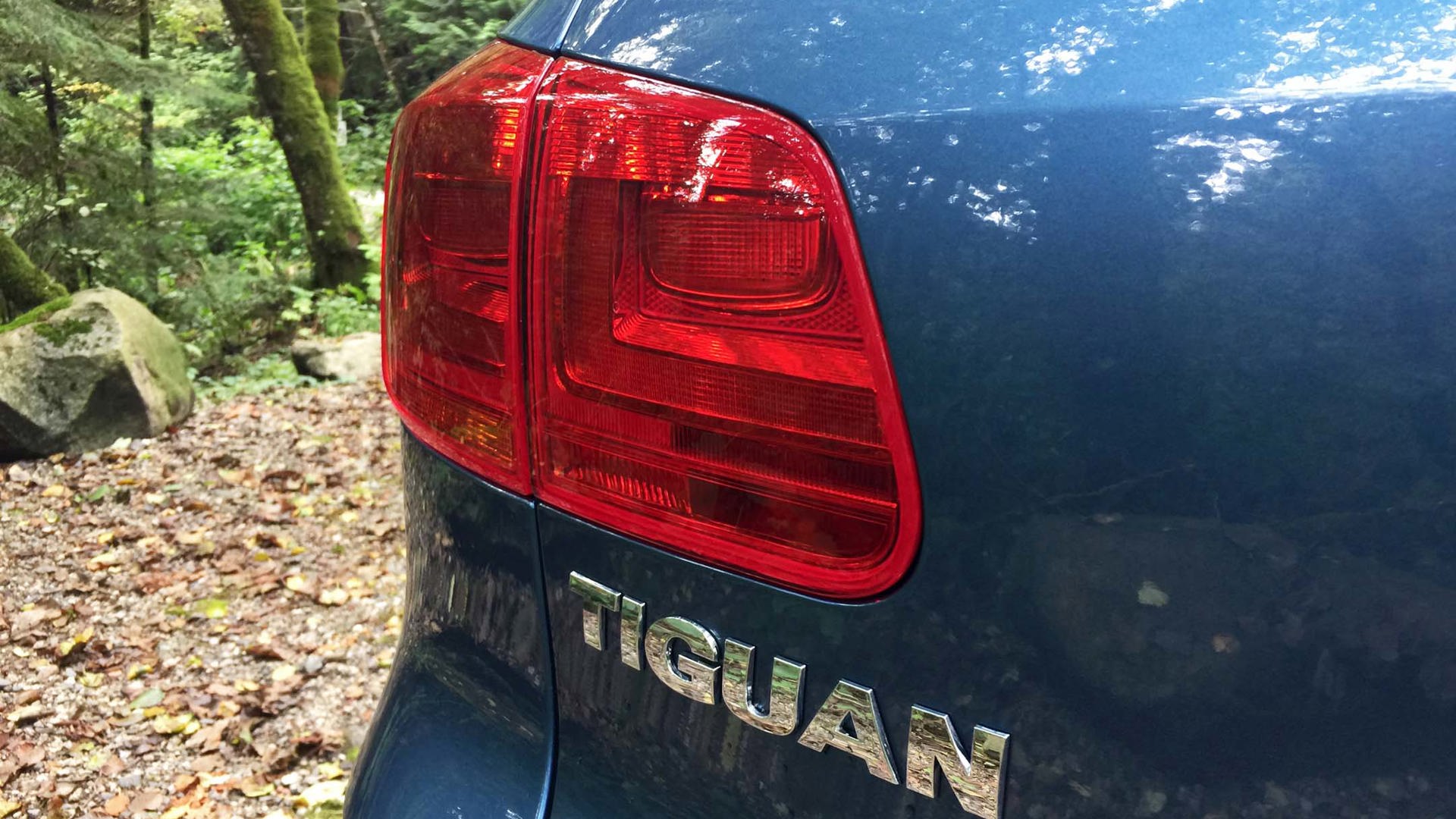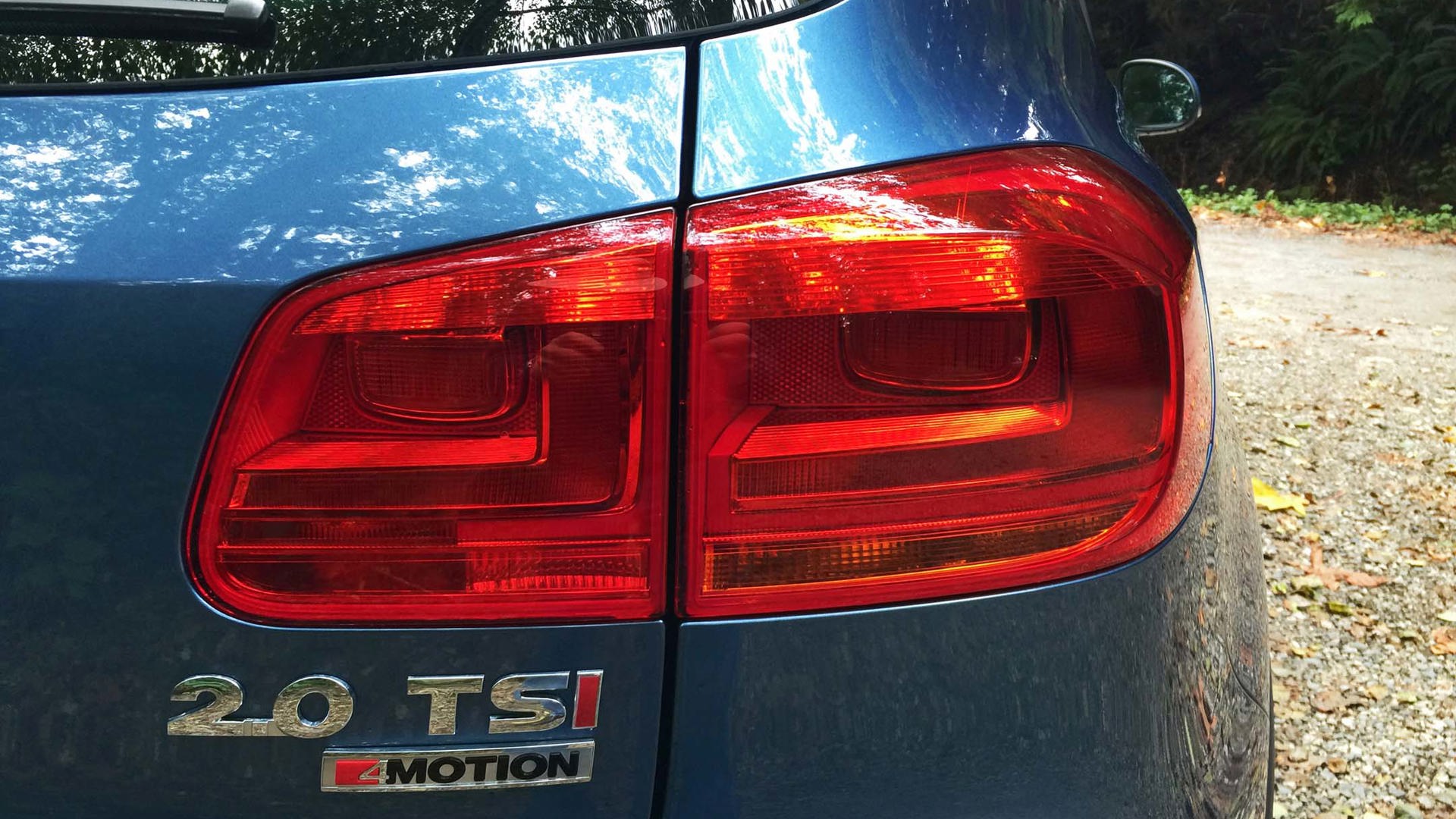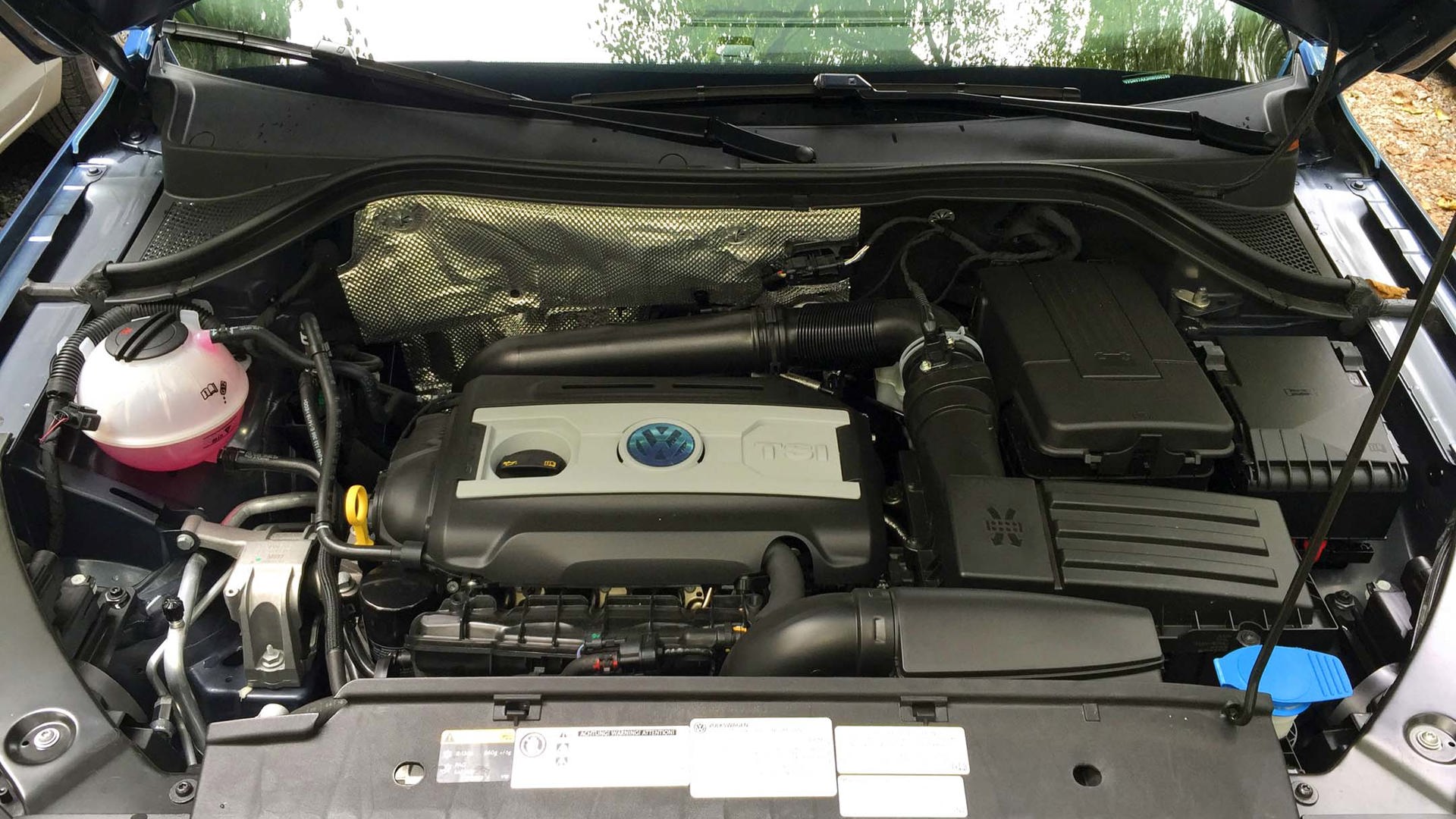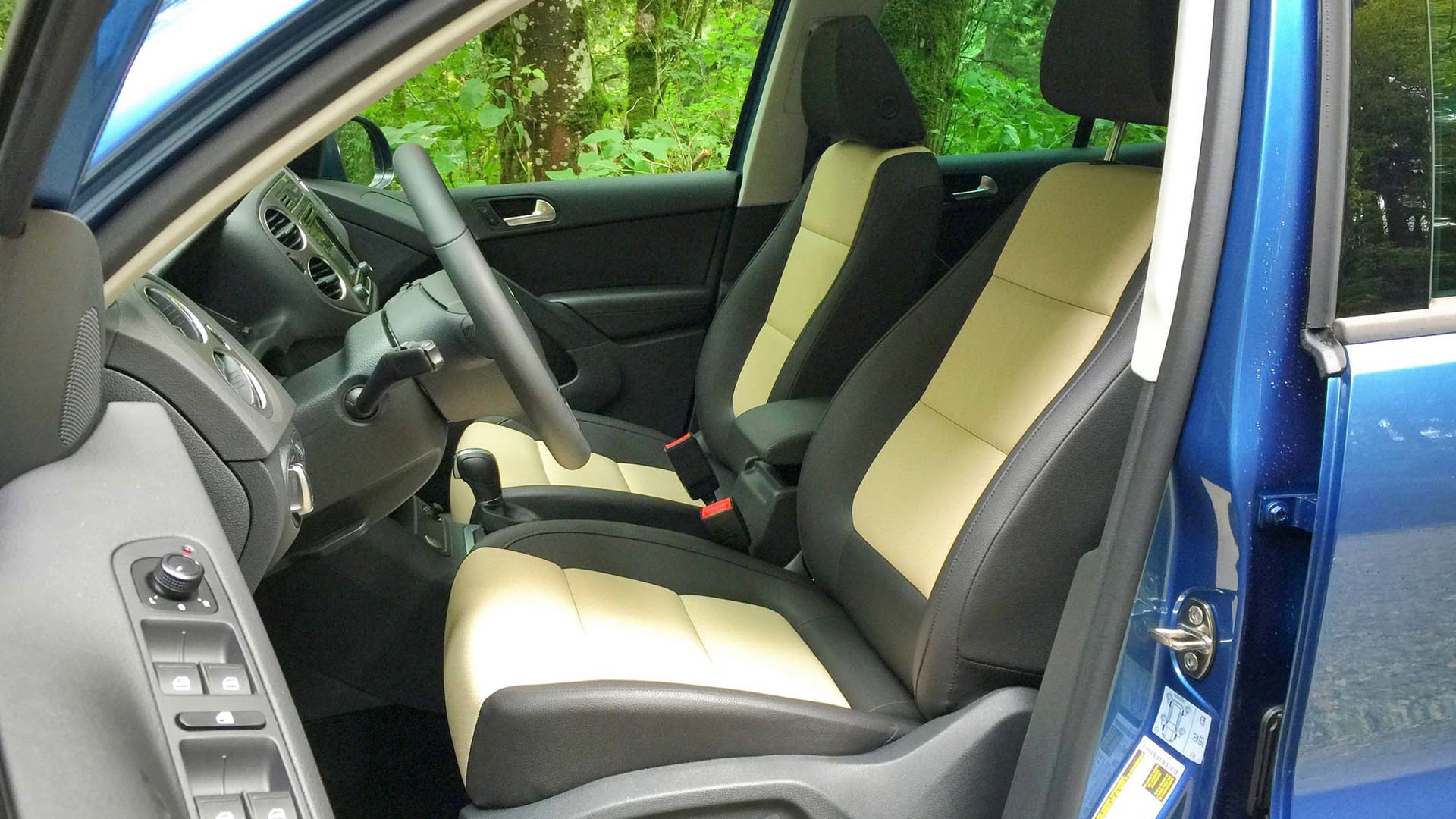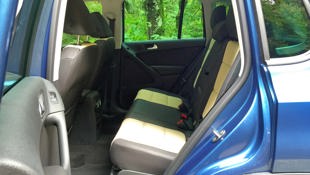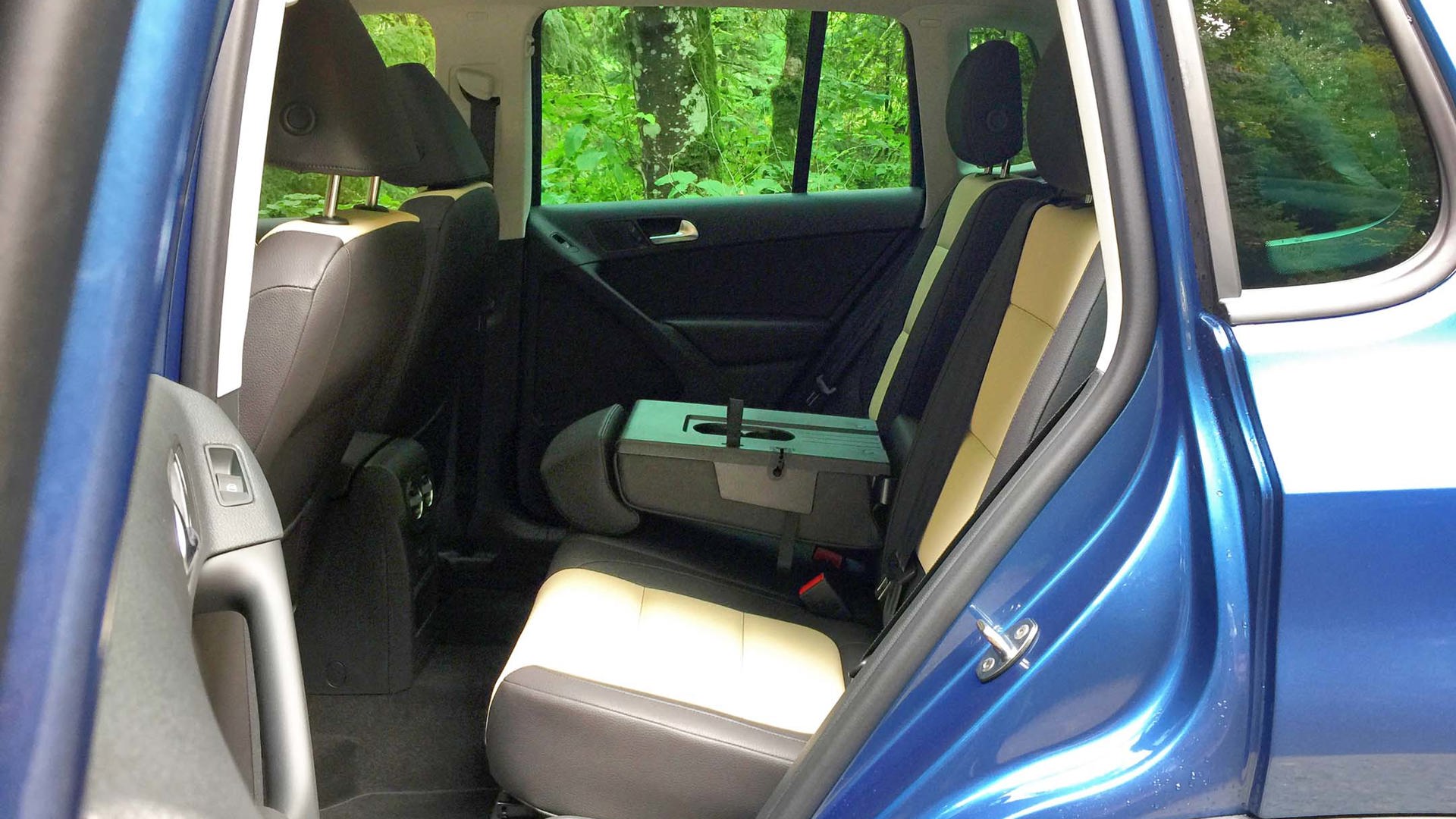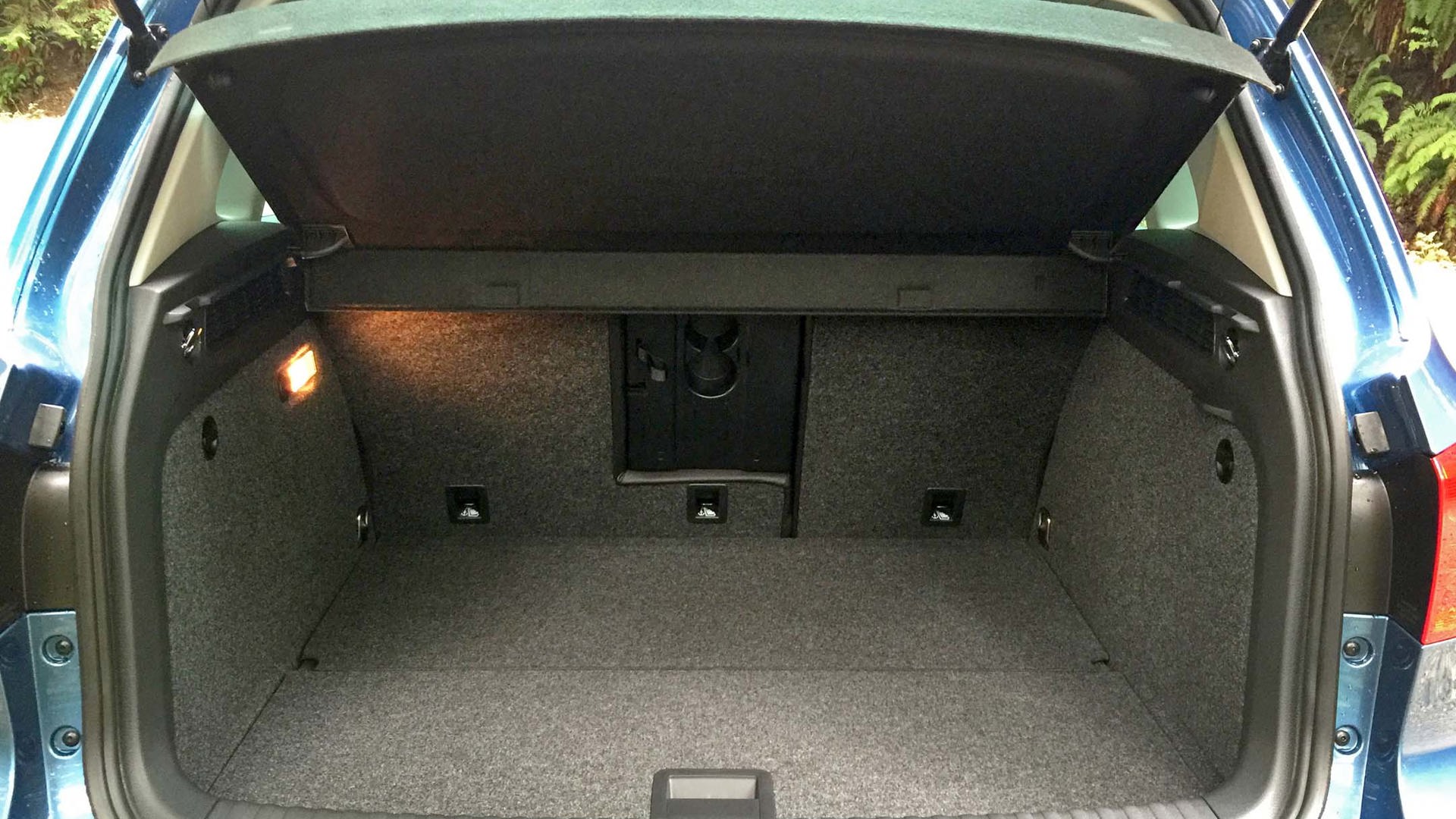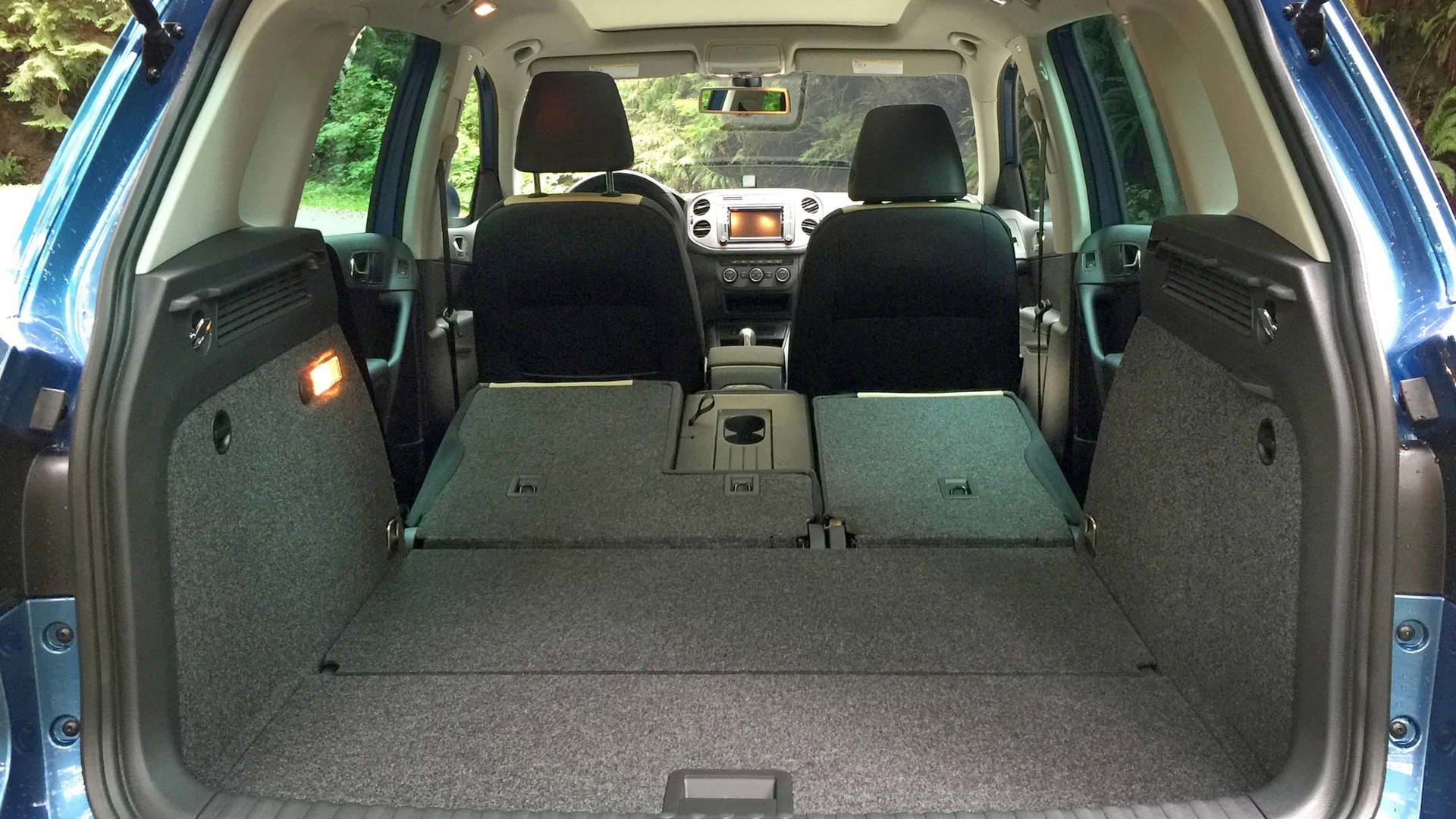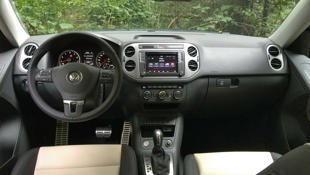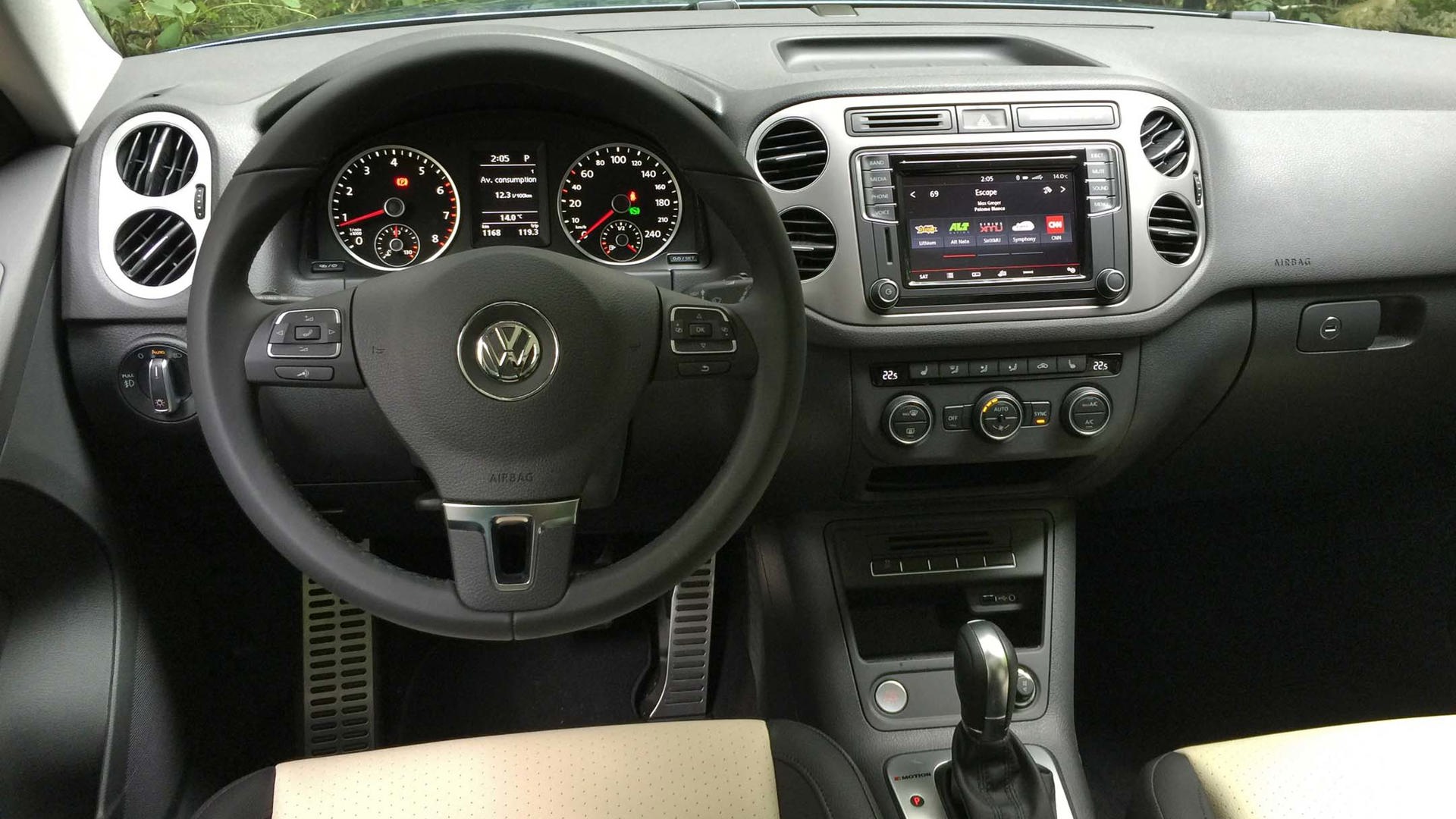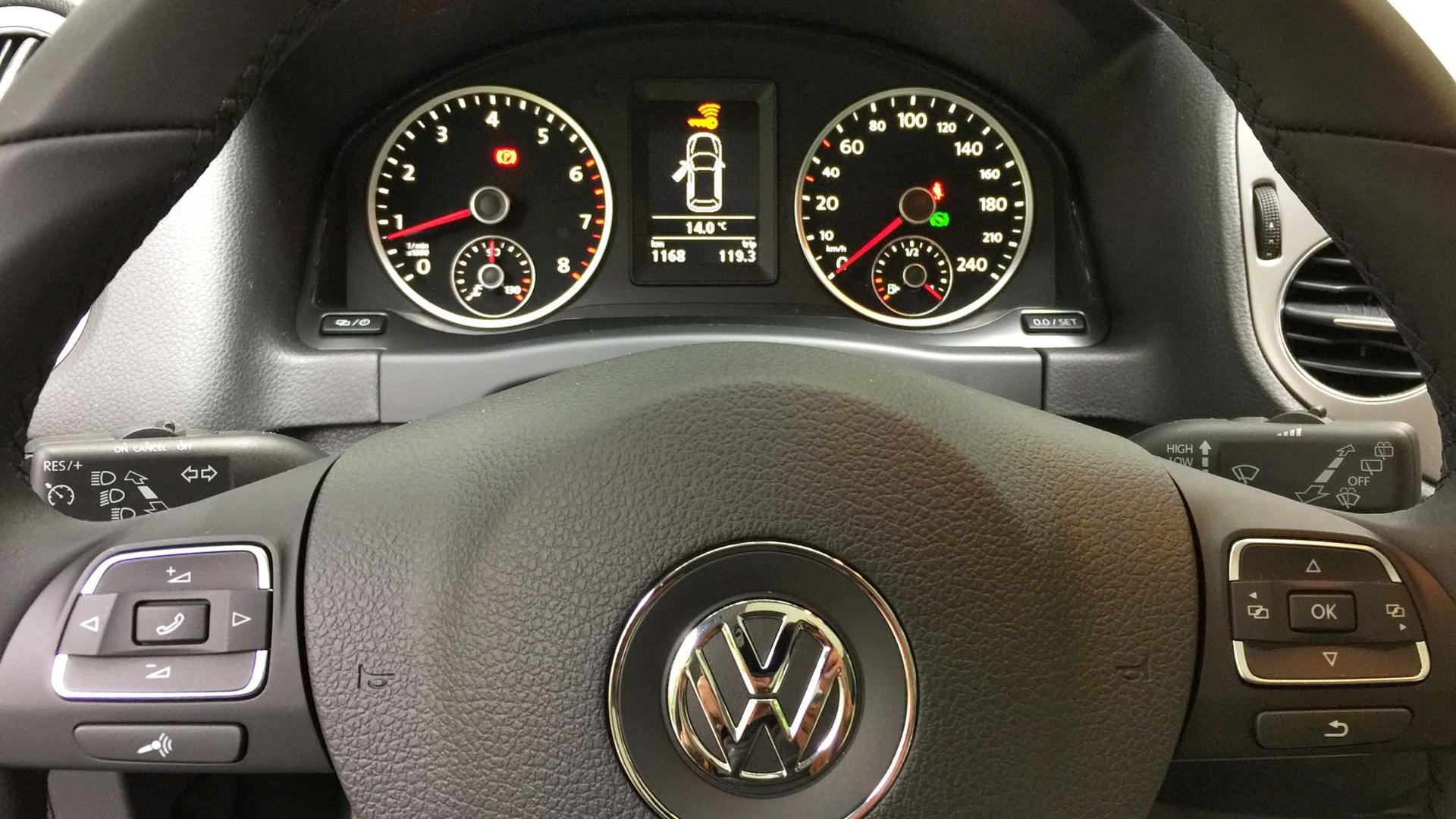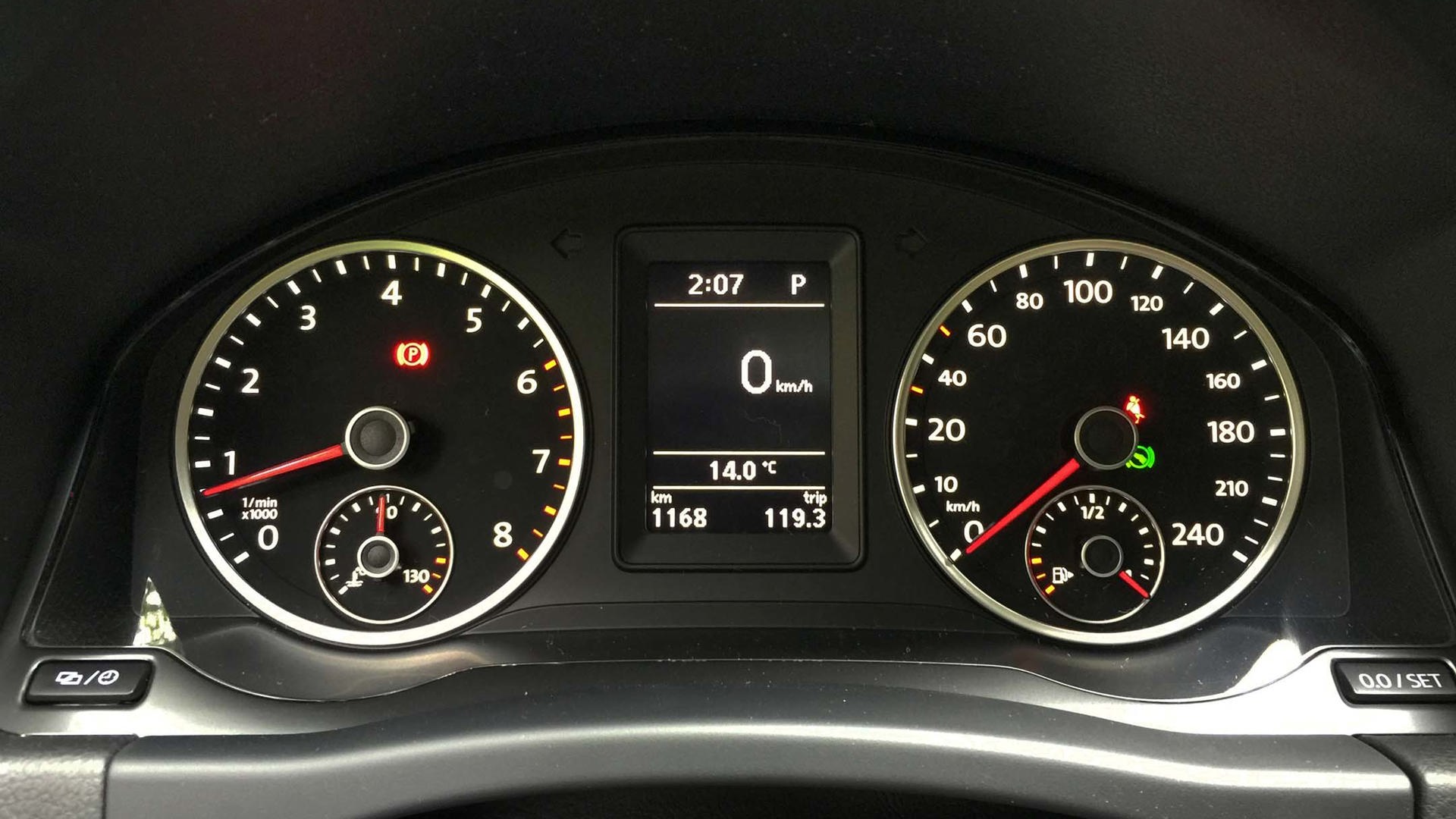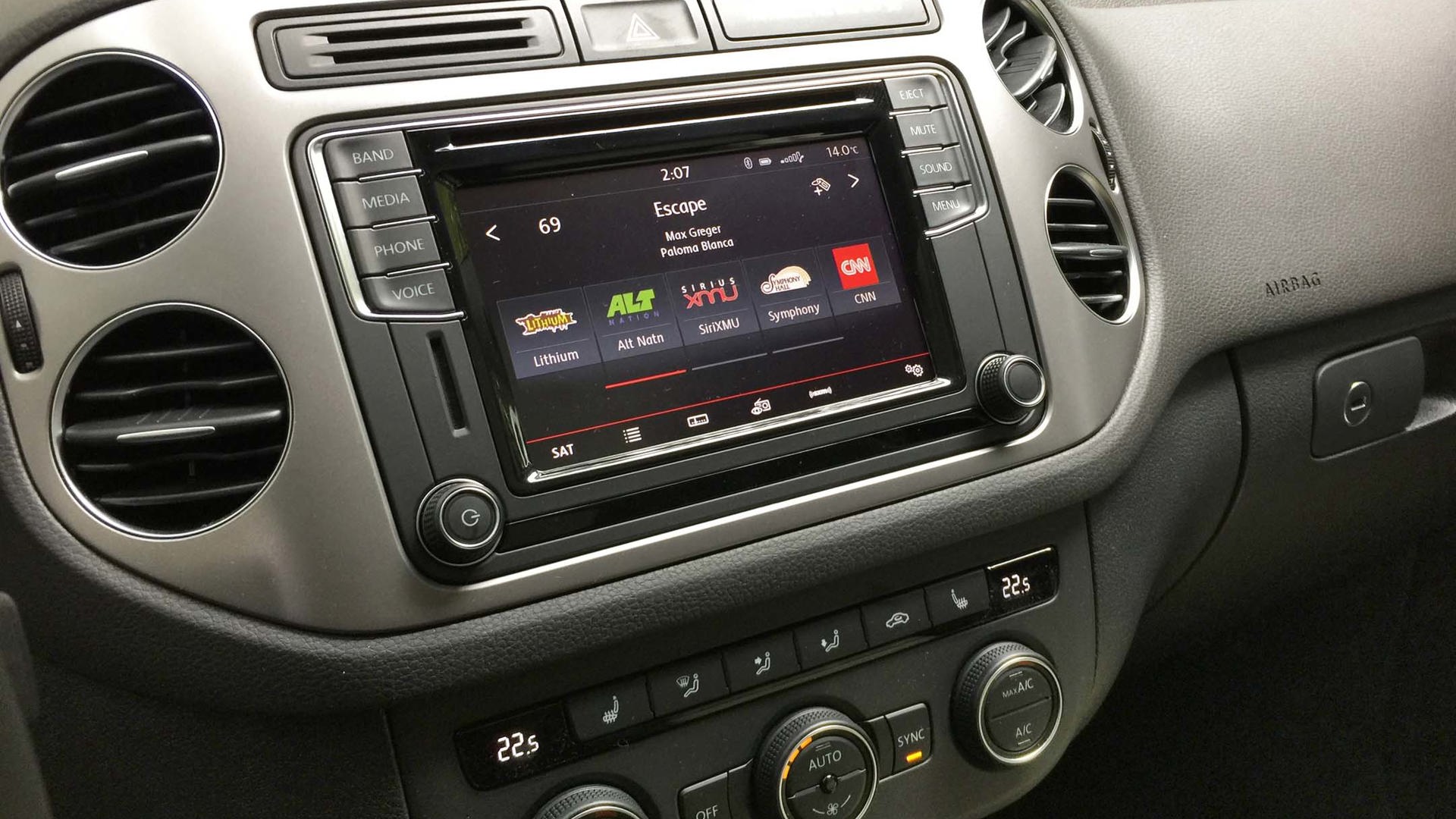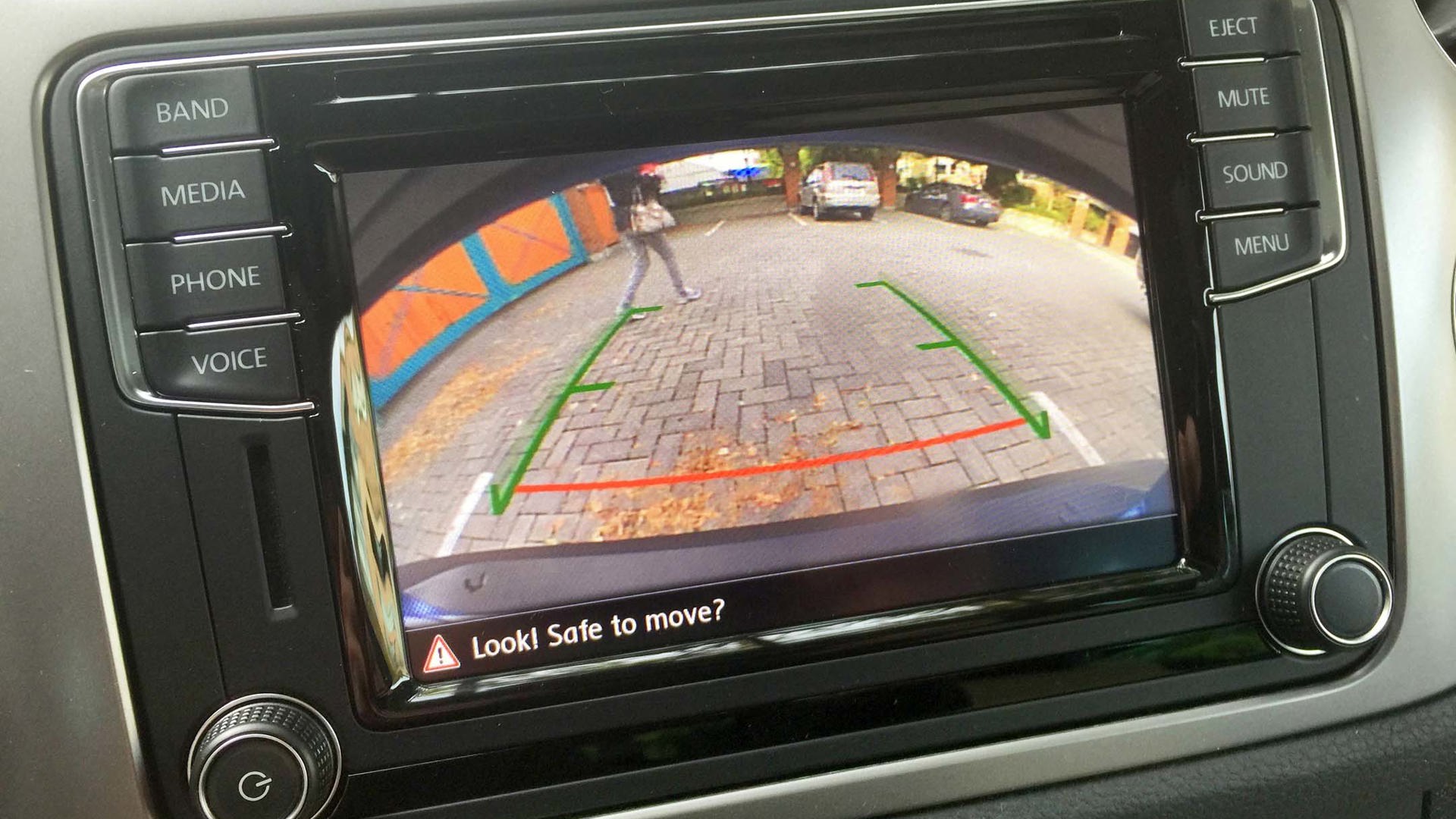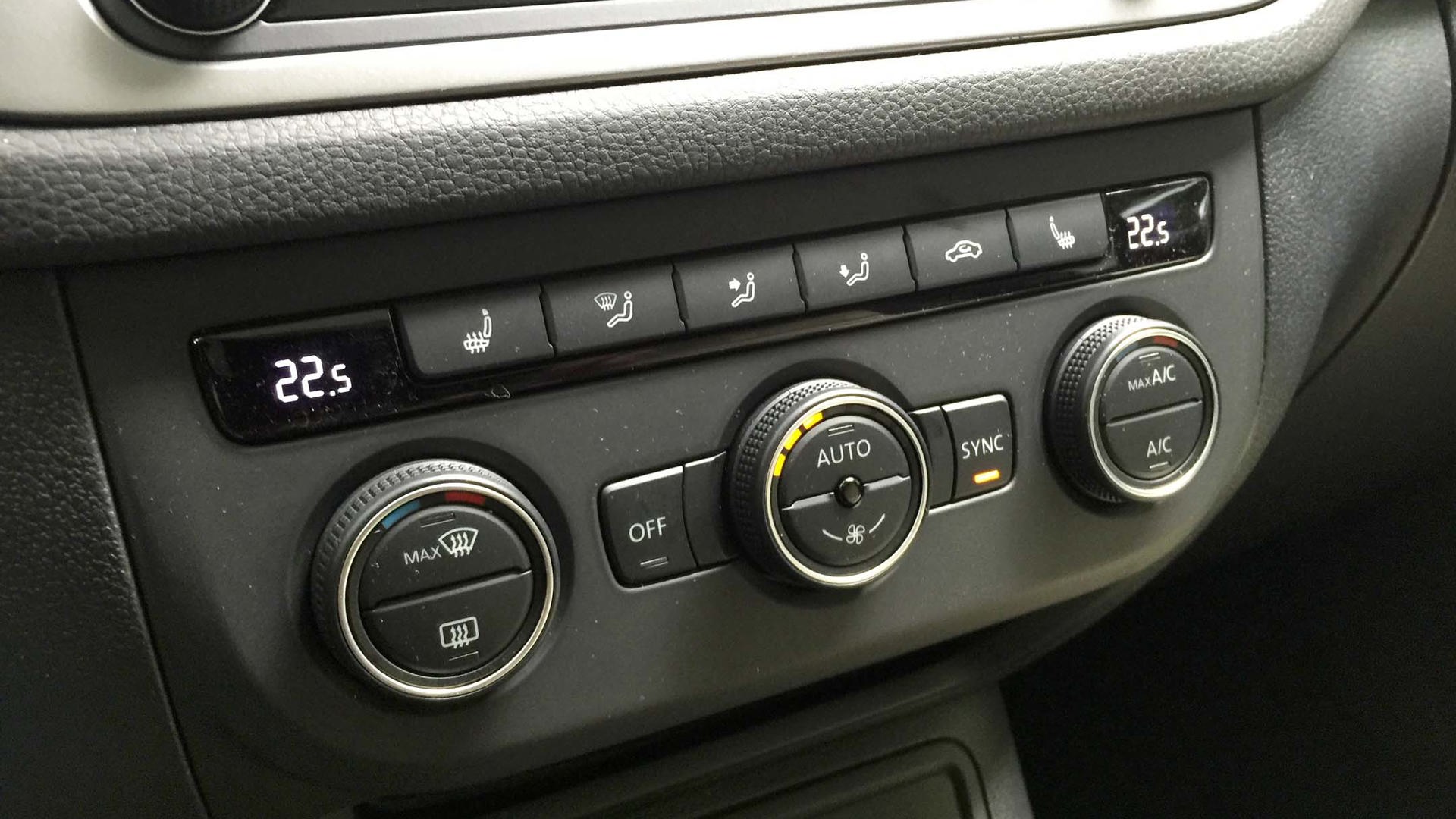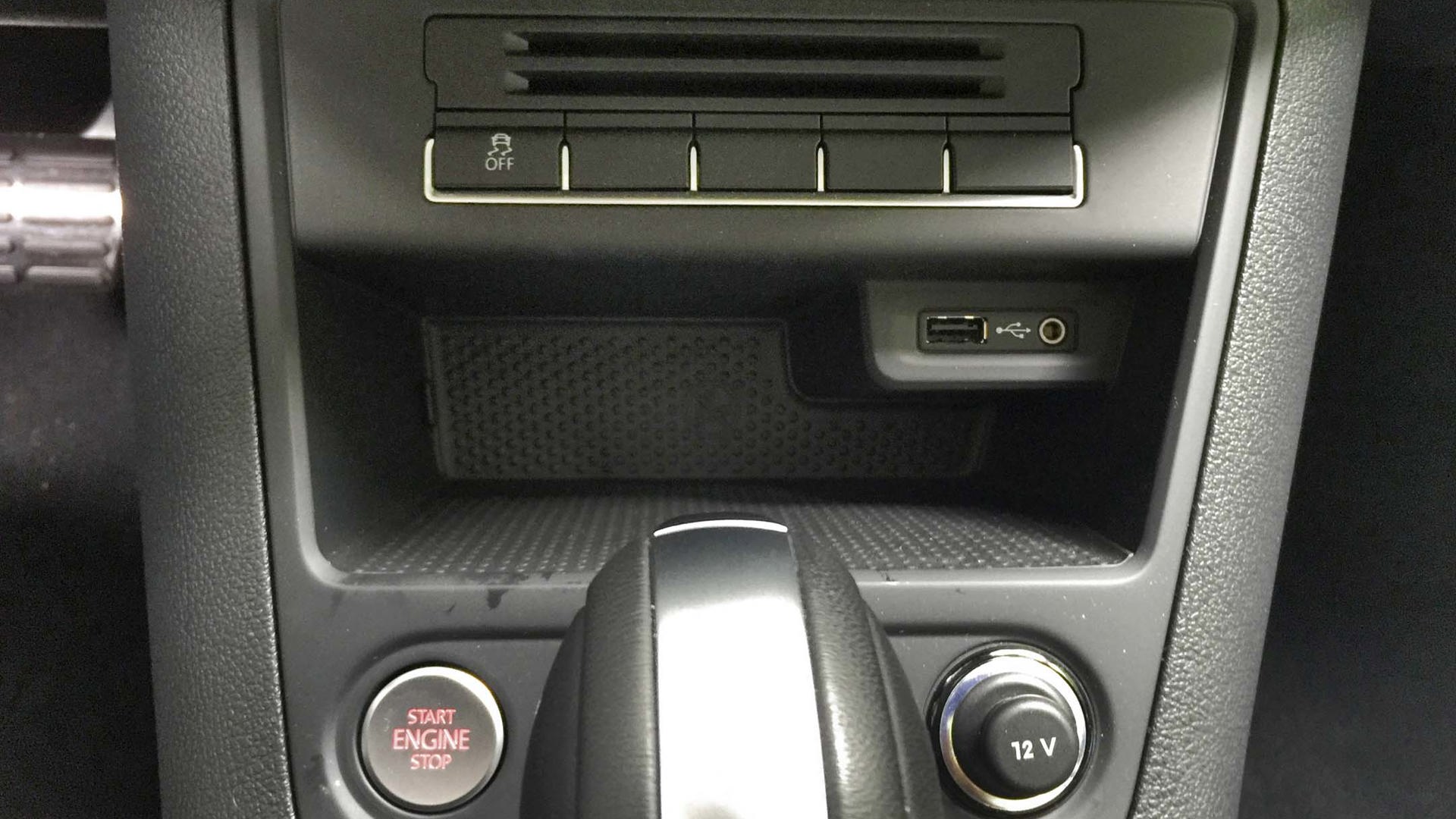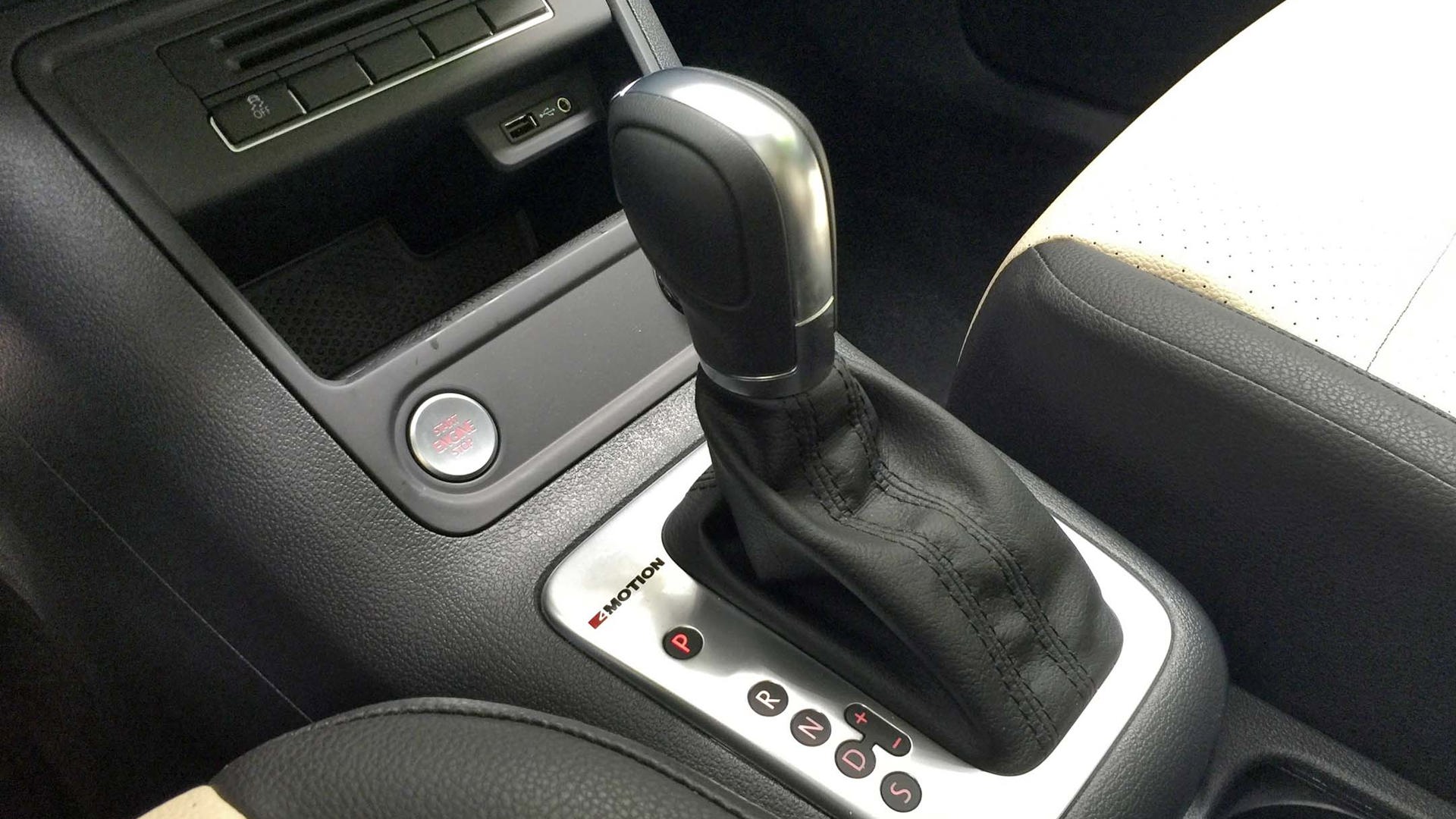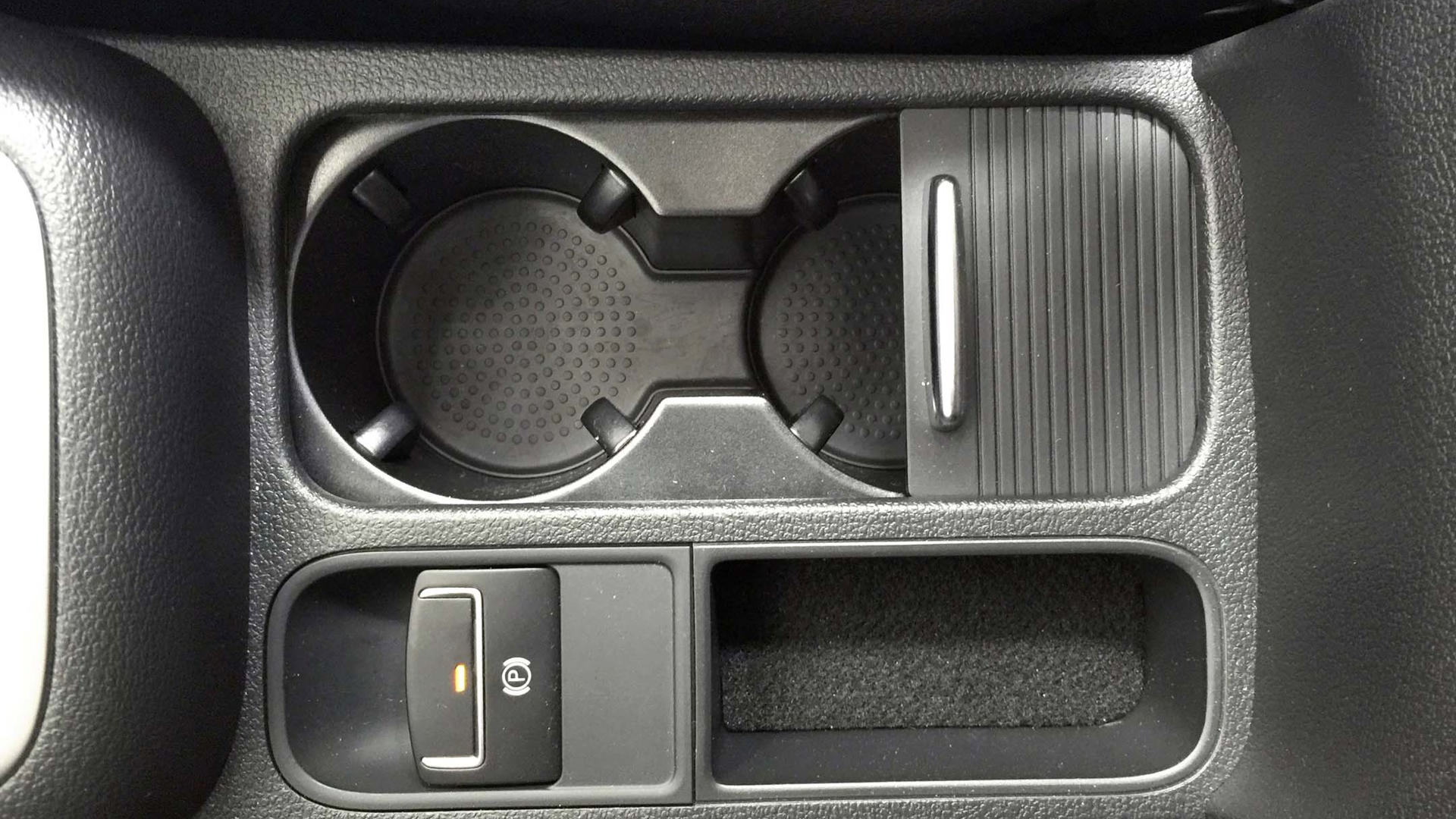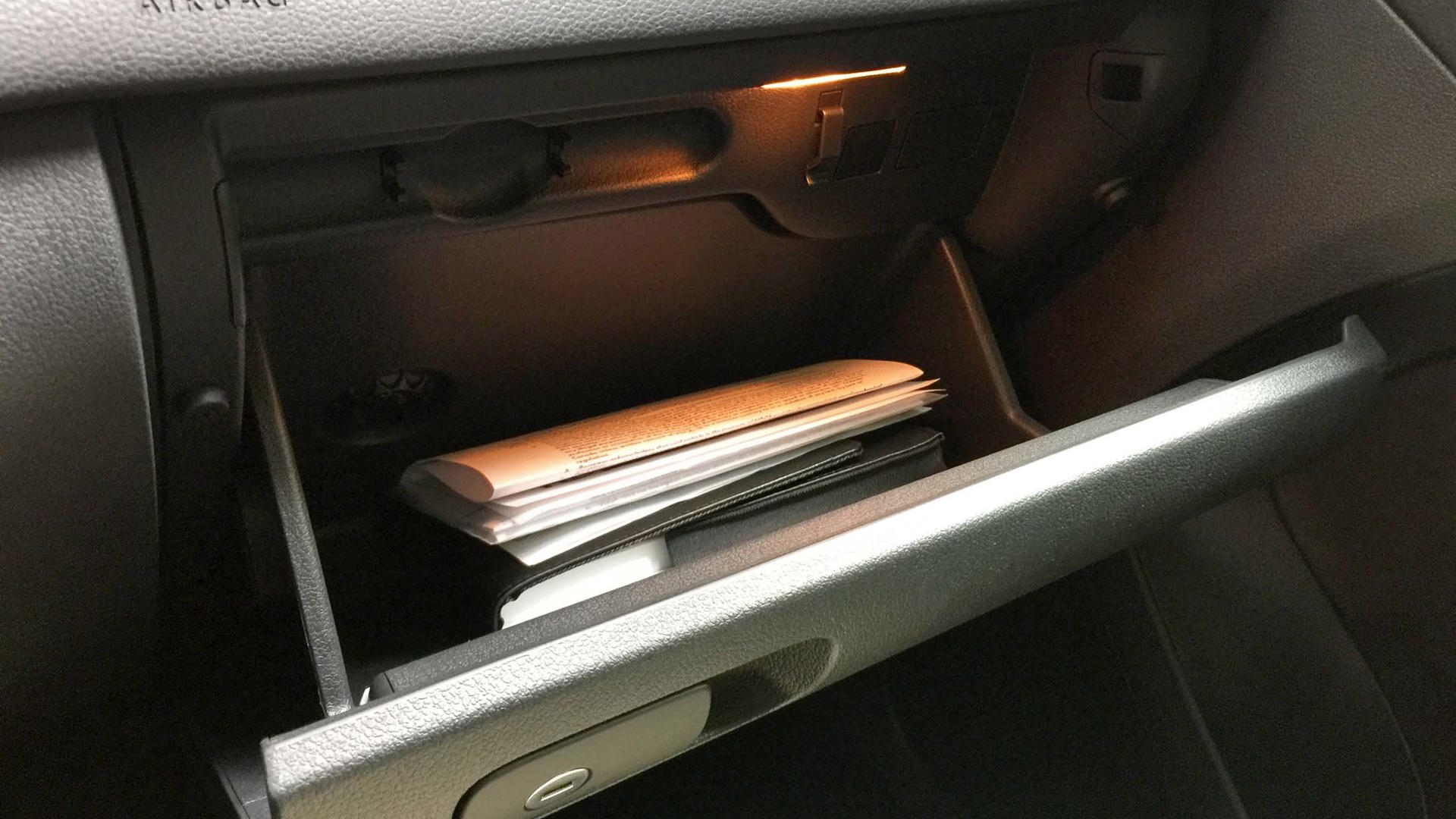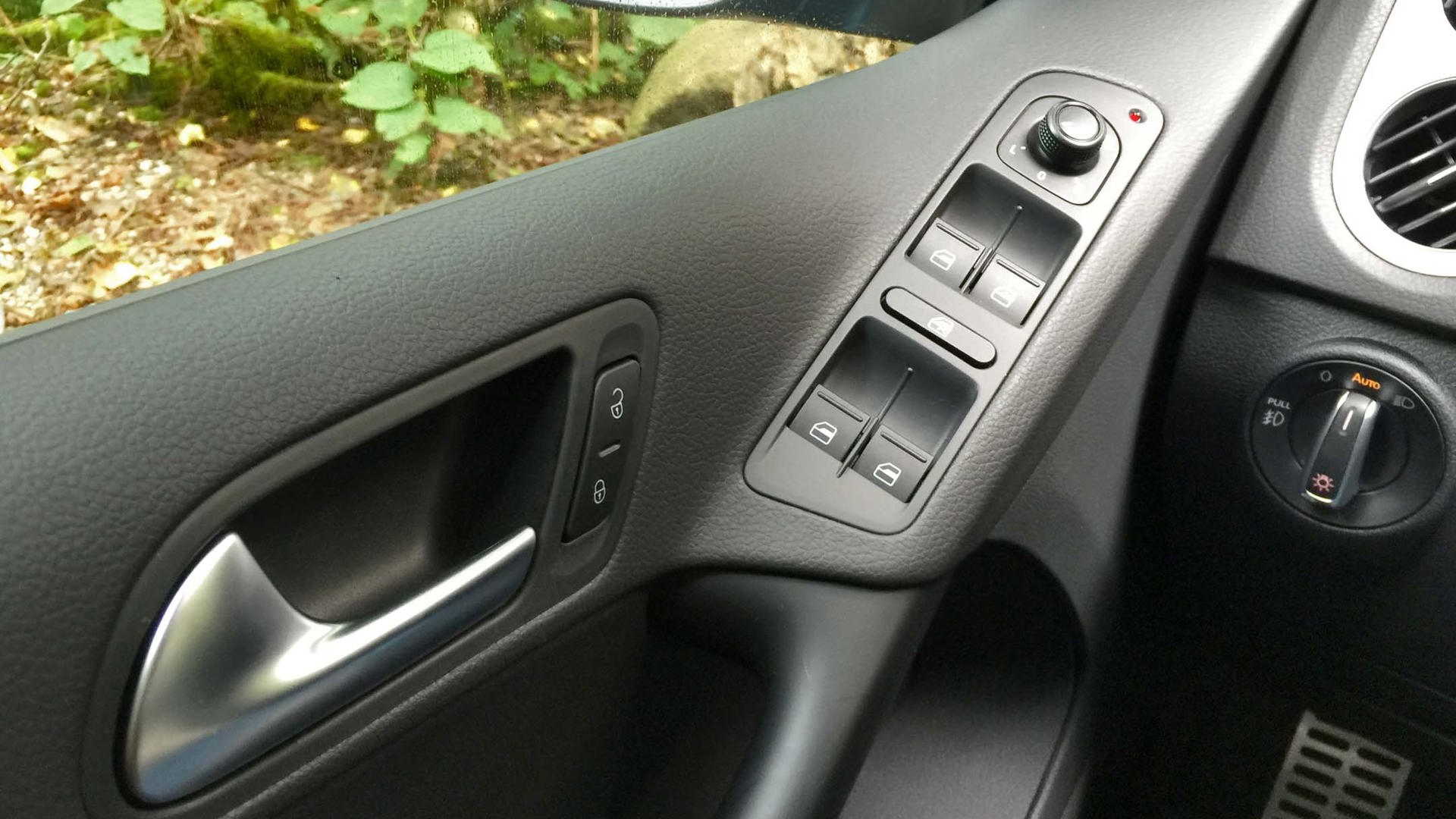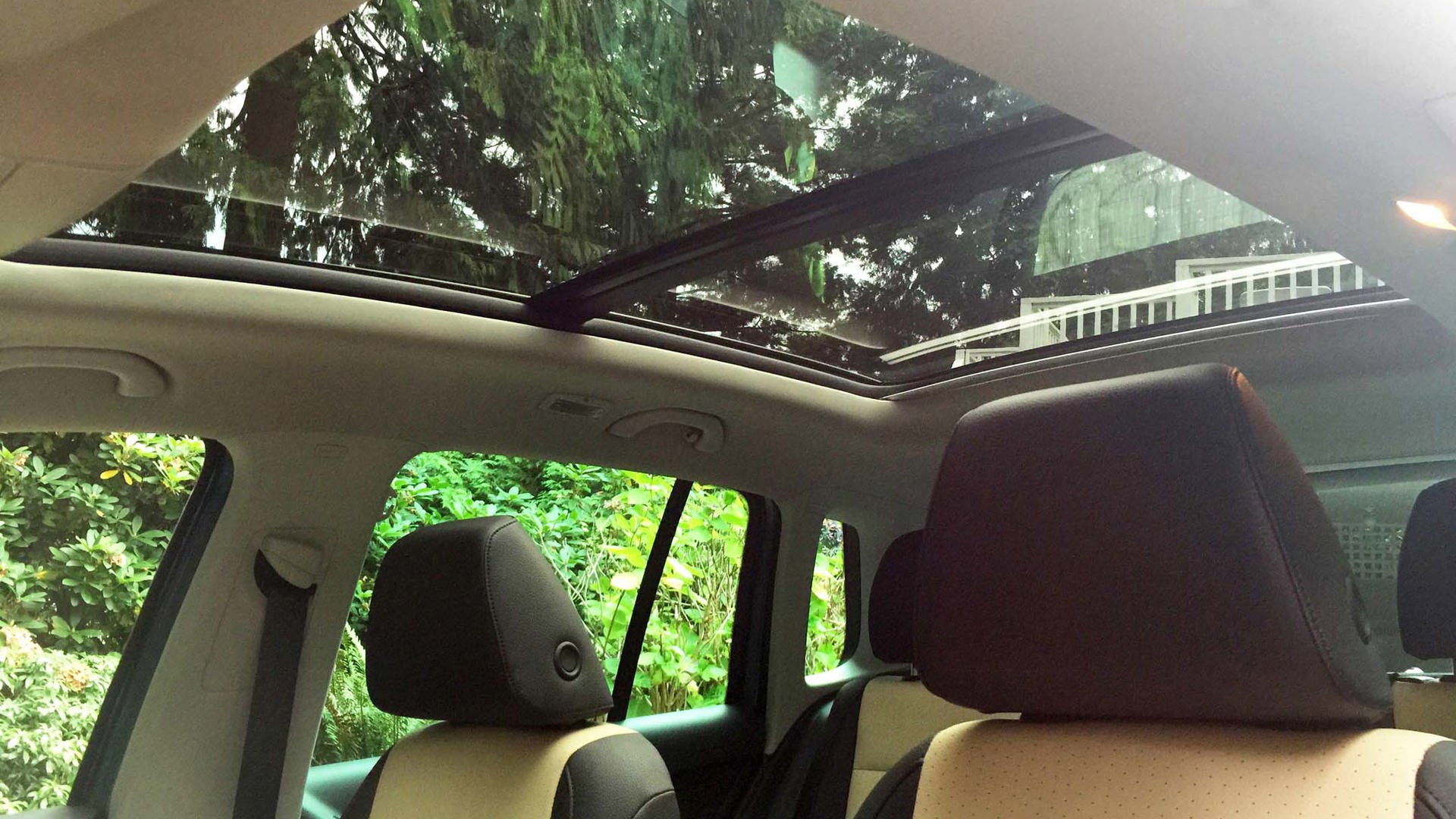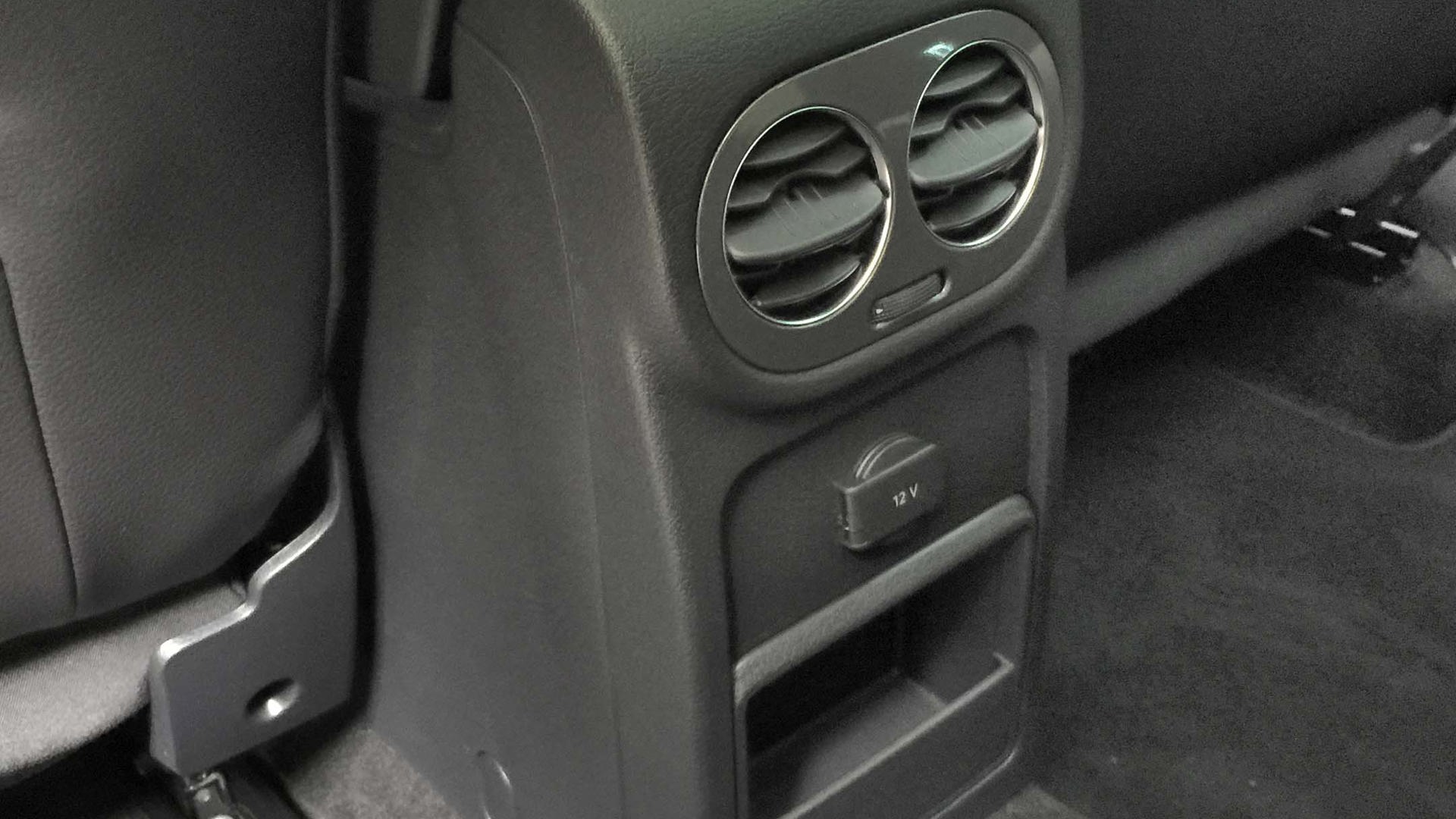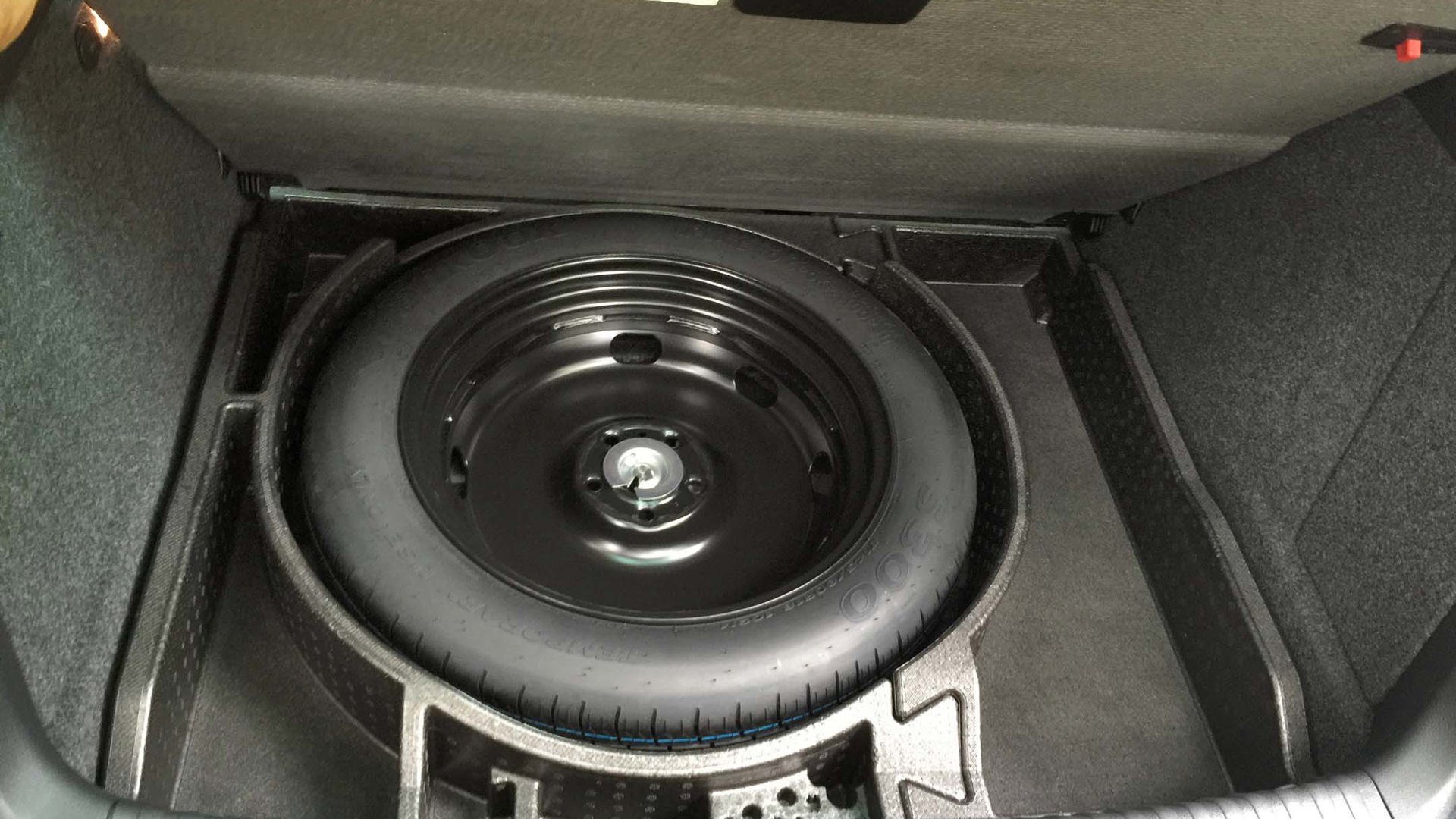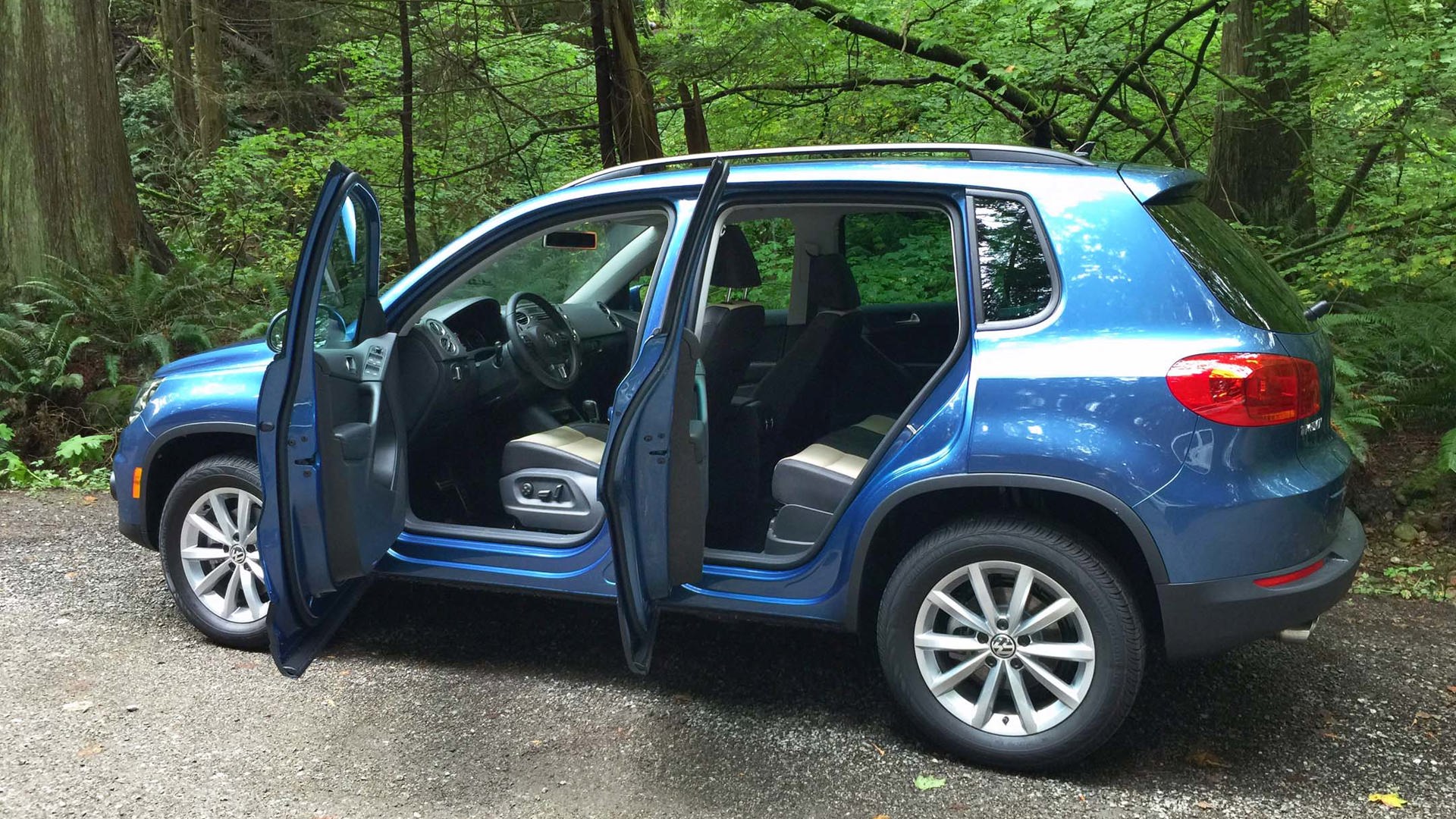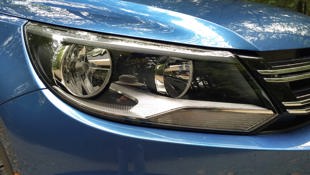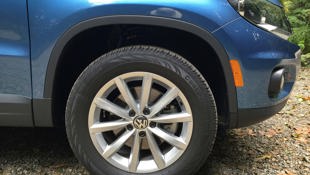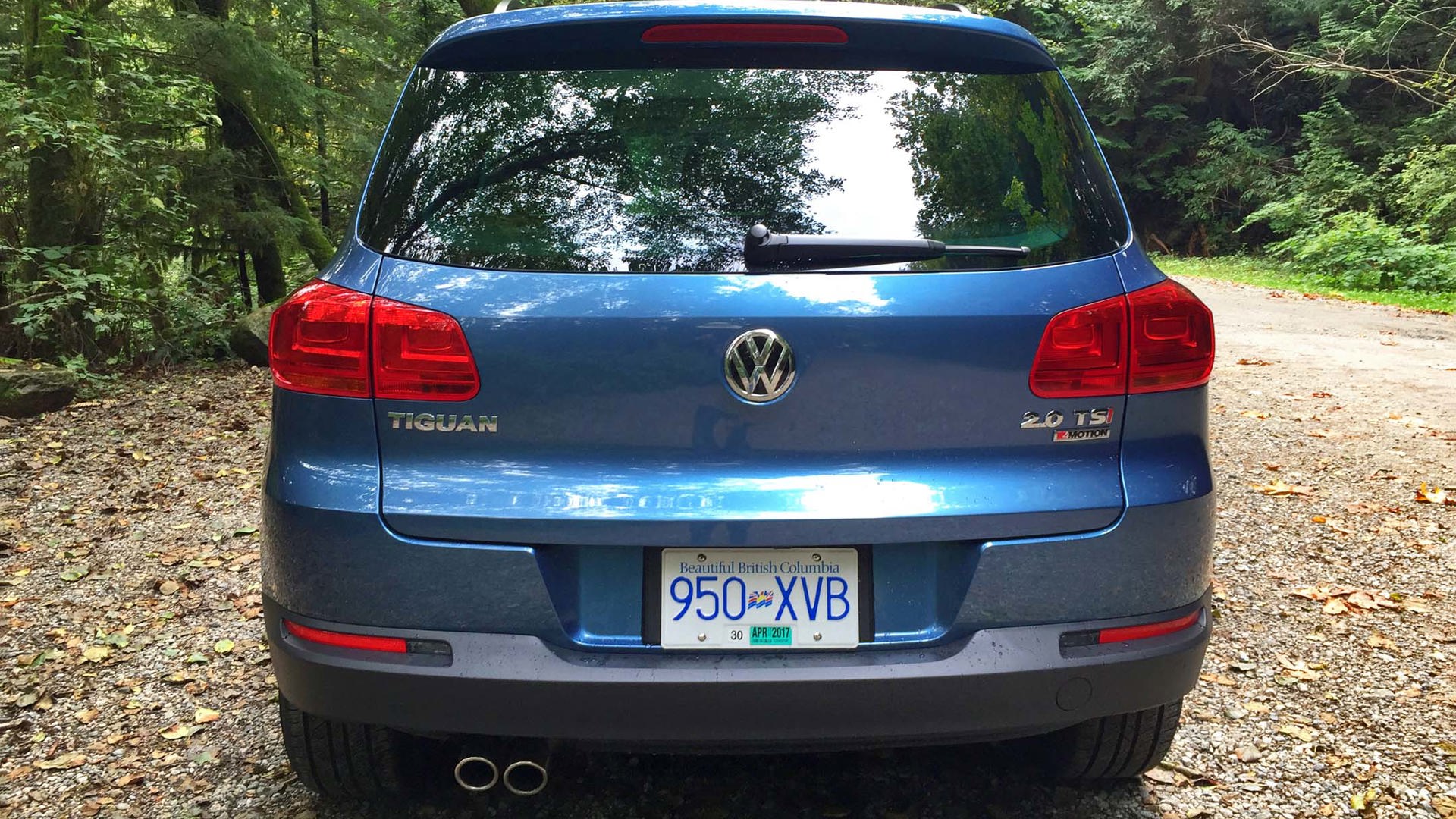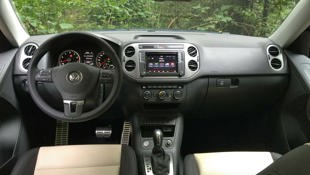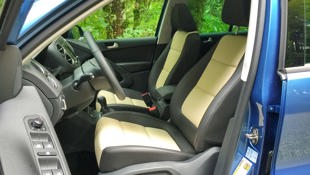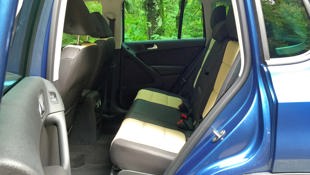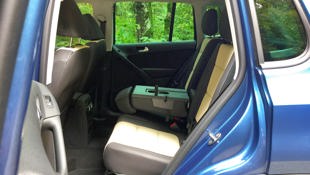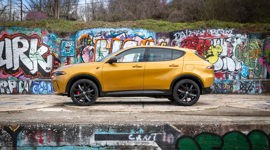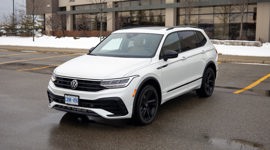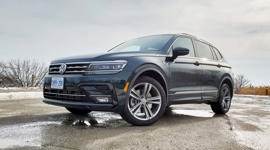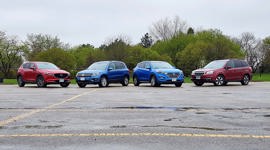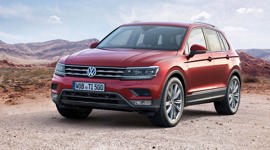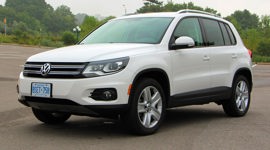 AutoTrader SCORE
AutoTrader SCORE
-
STYLING7/10
-
Safety8/10
-
PRACTICALITY7/10
-
USER-FRIENDLINESS8/10
-
FEATURES7/10
-
POWER8/10
-
COMFORT8/10
-
DRIVING FEEL8/10
-
FUEL ECONOMY5/10
-
VALUE6/10
While Europeans are already driving around in the all-new VW Tiguan, Canadians and Americans are still waiting for VW’s Puebla, Mexico, plant to start cranking out new Tiguans for this continent (and others). That’s expected to be in the first quarter of 2017 and the new Tiguan will arrive here as a 2018 model.
The current Tiguan is one of the only truly “compact” compact SUVs left in its class.
Meanwhile, Volkswagen is still selling the old Tiguan as a 2017 model, now in its ninth year of production – an eternity in terms of model redesigns. In terms of passenger and cargo space, fuel economy, styling and infotainment technology, the aging Tiguan has been surpassed by most of its competitors. So why, you might ask, would anyone still buy a 2017 Tiguan?
Current Tiguan owners say they like its overall feeling of quality, taut handling, quiet and comfortable ride and all-weather traction when equipped with 4Motion all-wheel drive. But there’s another unexpected benefit caused by the delay in bringing the new Tiguan to North America: the current Tiguan is one of the only truly “compact” compact SUVs left in its class. The upcoming Tiguan long-wheelbase model for North America is a full 267 mm longer and 30 mm wider than the 2017 Tiguan. The 2017 Toyota RAV4, CR-V, CX-5, Escape, Forester and Tucson are also larger than the 2017 Tiguan. For example, the 2017 Honda CR-V is 124 mm longer and 11 mm wider than the Tiguan.
Single buyers or couples without children will find the Tiguan a nice, manageable size particularly for city driving. Its compact size means greater manoeuvrability and “park-ability” in urban driving environments. And it still has the practical advantages of a tall body style, a cargo area with 40/20/40 split folding rear seatbacks (674 L seats up/1,588 L seats down), and a rear lift-gate with a wide cargo opening.
Given that the 2017 Tiguan is soon to be replaced, you might expect Volkswagen Canada to reduce the price. Nope. 2017 MSRPs for the Tiguan are the same, or more than the 2016 Tiguan. The base 2017 Tiguan Trendline’s MSRP of $25,990 is $1,000 more than the 2016 Trendline; the new 2017 Wolfsburg Edition is $30,198, the same as the 2016 Special Edition; the 2017 Comfortline remains at $33,998; and the top-of the-line 2017 Highline is $37,198, $200 more than the 2016 Highline. Still, I suspect VW dealers will be willing to cut a deal on 2017 models knowing that the 2018 Tiguan is just around the corner.
Our test vehicle is the new 2017 Wolfsburg Edition ($30,198). It fits in between the base Trendline (FWD) and the mid-level Comfortline (4Motion). In addition to the standard equipment in the Trendline, the Wolfsburg Edition comes with 4Motion all-wheel drive, larger nine-spoke 17-inch alloy wheels (instead of 16-inch tires and wheels), eight-way power driver’s seat, larger 6.33-inch touchscreen with Apple/Android smartphone integration (instead of 5-inch screen), proximity sensor, CD player, SD card slot and eight speakers – and a Wolfsburg Edition badge.
Our Pacific Blue Tiguan Wolfsburg Edition tester had the optional panoramic power glass moonroof with retractable sunshade ($1,450). With Freight and PDI ($1,795) and A/C tax ($100), the as-tested price came to $33,543 plus taxes.
All 2017 Tiguans retain Volkswagen’s 200 hp turbocharged 2.0L four-cylinder engine mated to a standard six-speed automatic transmission with Tiptronic manual shift mode (not the DSG). This is still one of the most powerful four-cylinder engines in its class and offers more torque at lower rpm (207 lb-ft at 1,700 rpm) than most of its competitors do. That means more immediate throttle response for quick getaways and freeway merging. The 2017 Tiguan also has a decent towing capacity of 998 kg (2,200 lb) and payload capacity of 521 kg (1,149 lb).
Push the start button on the centre console and the 2.0L turbo engine settles into a low “grumble”. Accelerate quickly and the engine growls moderately softening to near complete silence under light load or when cruising on the freeway. At a steady 100 km/h, the engine revs at a leisurely 1,900 rpm in top gear. The six-speed automatic is smooth and unobtrusive, and offers a driver-selectable “S” (Sport) mode which keeps engine revs higher by shifting later for sportier performance. There’s also a manual shifting mode for those that wish to do it themselves with the stick.
Official NRCan fuel consumption numbers for the Tiguan 4Motion are 12.0 / 10.0 / 11.1 L/100 km city / highway / combined. That’s considerably thirstier than its main competitors such as the Honda CR-V (9.5/7.5/8.6) and Ford Escape (10.7/8.3/9.6). After a week of mostly city driving, my onboard fuel consumption display showed 12.3 L/100 km. To add insult to injury, the Tiguan requires premium gas while most of its competitors use regular.
When it comes to ride and handling though, the Tiguan is still a class act. Though it’s a tall vehicle, the Tiguan offers balanced, stable handling, a smooth ride and absorbs bumps and pavement breaks well. It tracks well at freeway speeds and there’s little engine or wind noise. Steering effort is on the light side, but it’s responsive during quick turn-ins and light enough to parallel park without undue effort. Still, the Tiguan’s six-metre turning radius is wider than it should be for a compact SUV.
The standard 4Motion all-wheel-drive system is virtually undetectable when driving but does its job of varying torque automatically front to rear as needed for maintaining traction and stability on slippery surfaces. Think of it as insurance: you won’t need it until something goes wrong. As well, the Tiguan has a decent ground clearance and a front overhang that clears most curbs with ease.
Visibility from the driver’s seat is good overall and the Tiguan has a standard back-up camera, automatic headlights, rain-sensing front wipers, rear wiper and washer, and heated washer nozzles. However, it lacks newer technologies such as blind-spot warning, lane-departure warning, and rear parking sensors. Undoubtedly, those will be available in the next-generation Tiguan.
Thanks to four doors that swing out wide and a tall roofline, getting into the front or rear seats is fairly easy once you step over a small lip. Top marks go to the long doors which close over the bottom sills thereby preventing dirt from accumulating on the rockers and soiling your pants legs when getting in and out.
As before, the 2017 Tiguan continues to offer a nicely finished, attractive, and relatively simple interior design with bright, easy-to-see gauges, a centre touchscreen, and simple controls. Our Wolfsburg Edition tester had contrasting two-tone (Titan black/Cornsilk Beige) leatherette seats along with a real leather-wrapped steering wheel and shift knob and aluminum pedals. The blackness of the dash is offset by titanium-coloured trim around the touchscreen and air vents, and subtle use of metal trim around the controls and instruments.
The Tiguan’s driver’s seat is very comfortable and multi-adjustable with power height, fore-aft, recline and lumbar adjustments; the front passenger seat has manual height and fore-aft adjustment and power recline – but no lumbar adjustment. Both front seats have seat heaters with variable heat settings. The driver’s seat offers good lateral support and the driver has good visibility to the front and rear except for some over-the-shoulder obstruction by the large rear outboard head restraint on the right side. Between the front seats is a padded armrest that slides forward to rest the right arm while cruising.
Front and rear headroom is generous but the frame surrounding the panoramic sunroof takes up some headroom at the sides. Be careful not to bump your head. A power sliding screen slides under the glass sunroof, but it’s not opaque and doesn’t completely block out the sunlight. Rear legroom and footroom are sufficient for outboard passengers but the centre seat faces a protruding centre console and the centre passenger must straddle a driveline hump. There are three tether anchors for three child seats in the rear.
I’ve always liked VW’s simple backlit white-on-black round gauges which straddle a configurable information display that includes driver information such as digital speedometer, current radio station, average fuel consumption, distance to empty and other useful information. Buttons on the steering wheel enable the driver to scroll between values, adjust audio volume and media choice, and make voice-activated telephone calls.
The Tiguan Wolfsburg Edition also includes a 6.33-inch centre touchscreen with a proximity sensor that automatically displays menu titles when the hand is waved over the screen. Menu items can be chosen by using the hard buttons surrounding the screen or by touching the on-screen tiles. On-screen menu items can also be swiped by sliding a finger left or right on the screen. The touchscreen also displays the back-up camera when in reverse gear. The wide-angle view includes green guidelines for the side boundaries and a red line to indicate where to stop.
The standard sound system in all Tiguans except the Trendline includes AM/FM radio and CD player, Sirius/XM satellite radio, wireless Bluetooth audio, SD card slot, USB port, auxiliary port and six speakers. New for 2017 is smartphone integration for Android Auto, Apple CarPlay and MirrorLink. Navigation is not included in the Wolfsburg Edition.
Cabin storage is sufficient but not overly generous. There’s a deep bin underneath the centre armrest; a small open bin ahead of the shift lever with USB and auxiliary ports for phones and music players; a small coin slot between the front seats; a large glovebox on the passenger side with card and pen holders; door pockets; map pocket on the back of the front passenger seat; and a small bin and 12-volt outlet at the back of the centre console for rear passengers. There are two cupholders between the front seats with a sliding cover and two more in the rear folding centre armrest.
The Tiguan’s articulated 40/20/40 split folding rear seatbacks fold down almost flat and offer a variety of cargo-carrying configurations, notably the ability to carry skis while accommodating four passengers. One drawback: there are no levers inside the cargo area to lower the rear seatbacks.
The Tiguan’s cargo compartment is smaller than its competitors’ but it is fully lined with a privacy cover and four tie-down hooks. Behind the rear seats, the Tiguan’s has 674 L of cargo space; that compares to the CR-V with 1,024 L and the Escape with 971 L. With all seatbacks folded, the Tiguan has 1,589 L while the CR-V offers 2,007 L and the Escape 1,920 L. Still, how much cargo space do you really need? For most people, the Tiguan has plenty of cargo space. Under the cargo floor is some additional hidden storage space and a temporary spare tire.
An oldie but a goodie, the 2017 Volkswagen Tiguan retains its compact driving size, excellent ride and handling, quality interior and capable all-whee-drive system. Whether that makes up for its high price, relatively poor fuel consumption and lack of modern active safety features is something you’ll have to decide.
| Engine Displacement | 2.0L |
|---|---|
| Engine Cylinders | I4 |
| Peak Horsepower | 200 hp |
| Peak Torque | 207 lb-ft |
| Fuel Economy | 12.0/10.0/11.1 (L/100 km cty/hwy/cmb) |
| Cargo Space | 674/1,589 L (seats down) |
| Model Tested | 2017 Volkswagen Tiguan Wolfsburg Edition 4Motion |
| Base Price | $30,198 |
| A/C Tax | $100 |
| Destination Fee | $1,795 |
| Price as Tested | $33,543 |
|
Optional Equipment
$1,450 – Panoramic power moonroof $1,450
|
|
